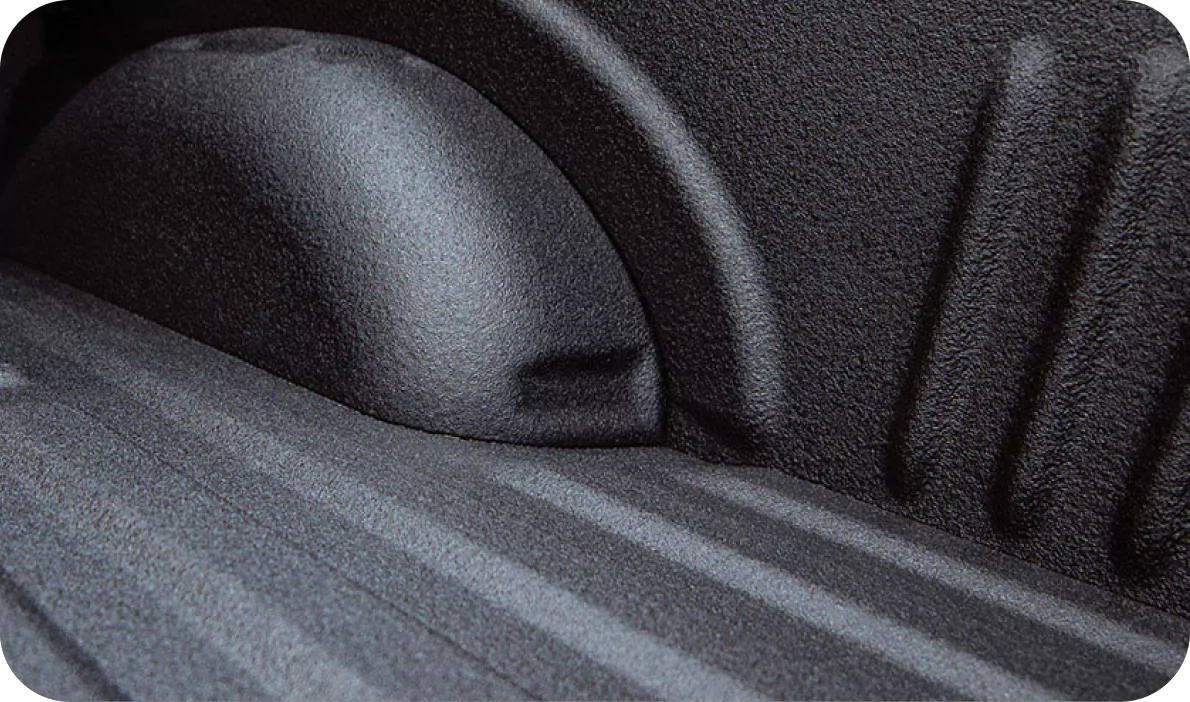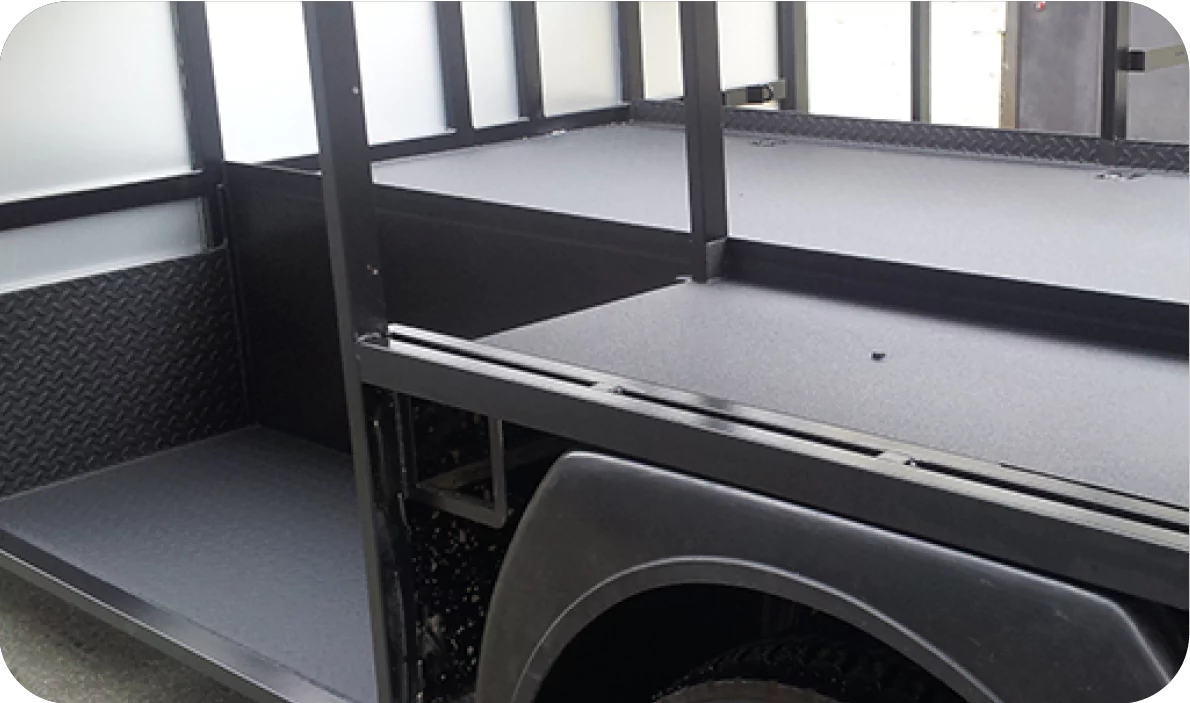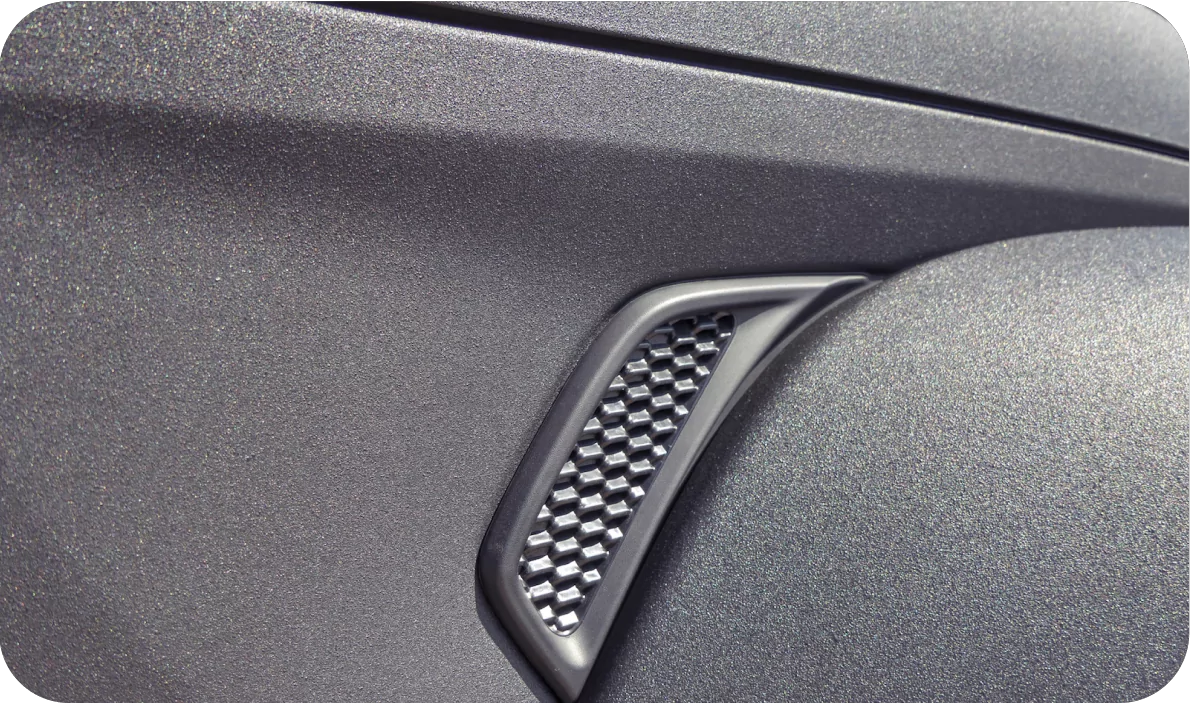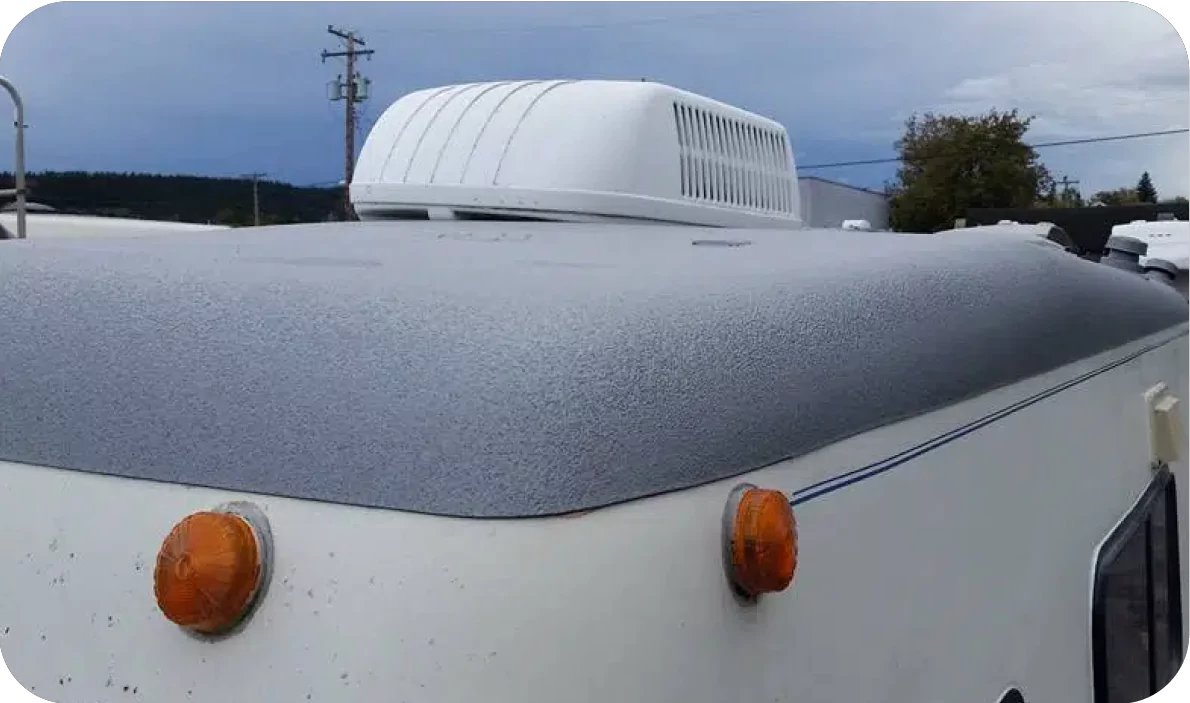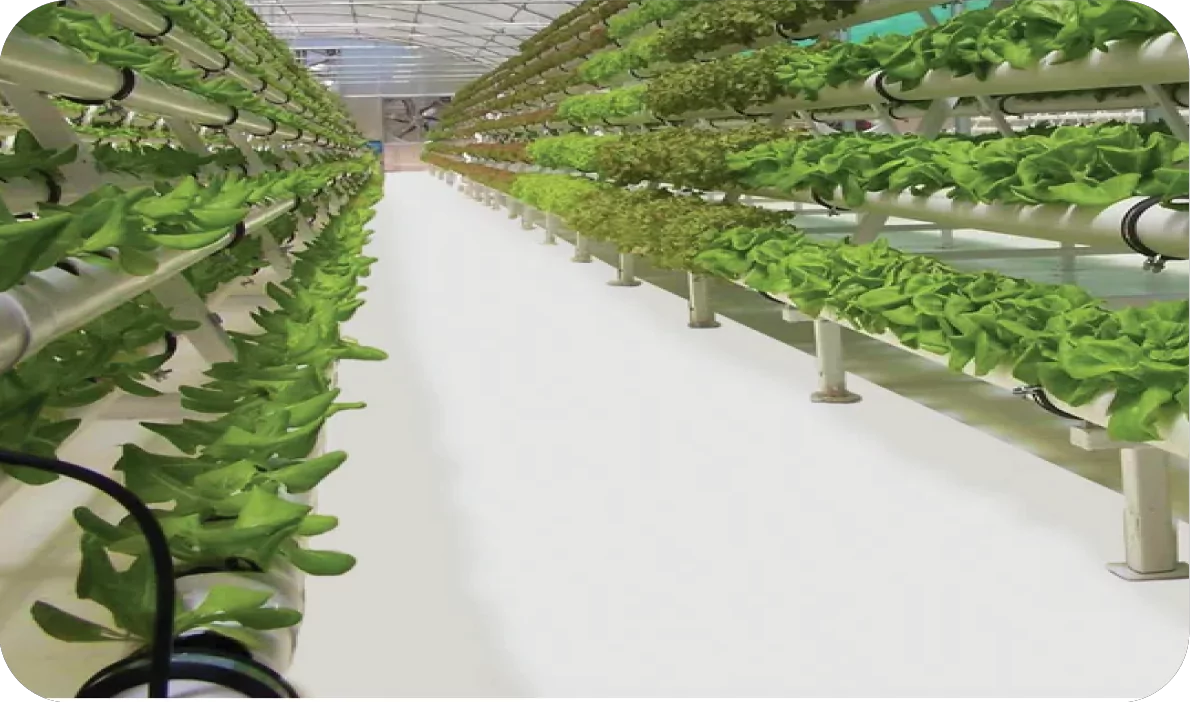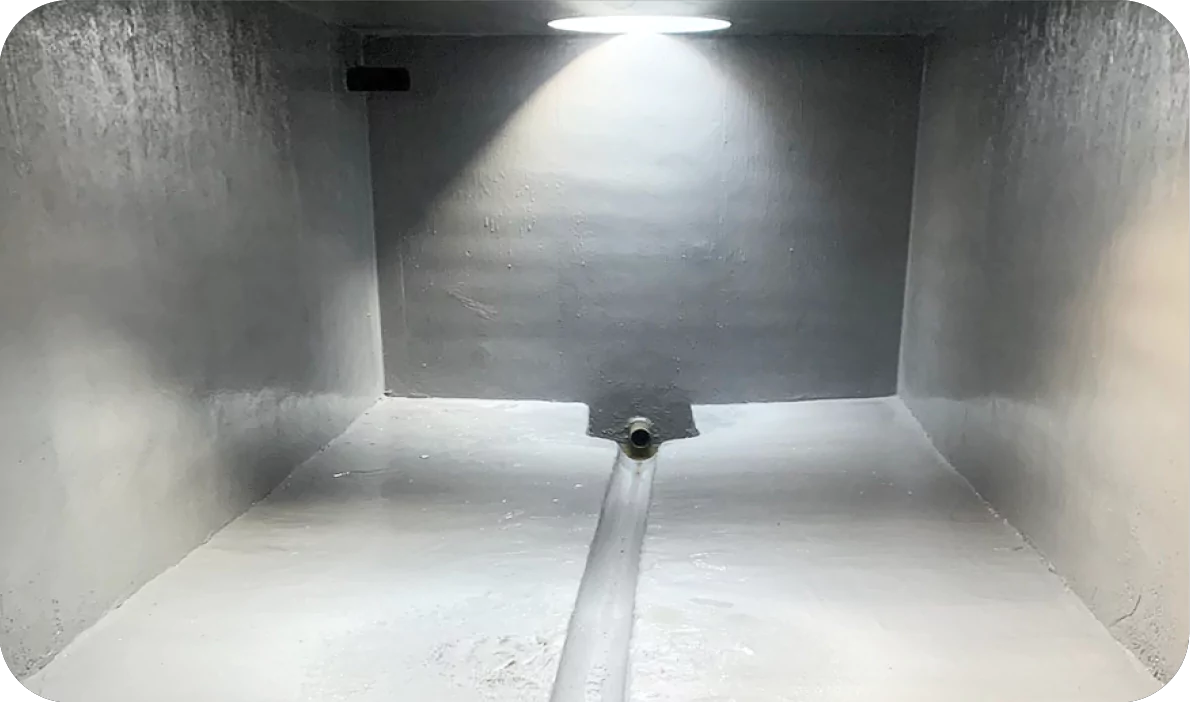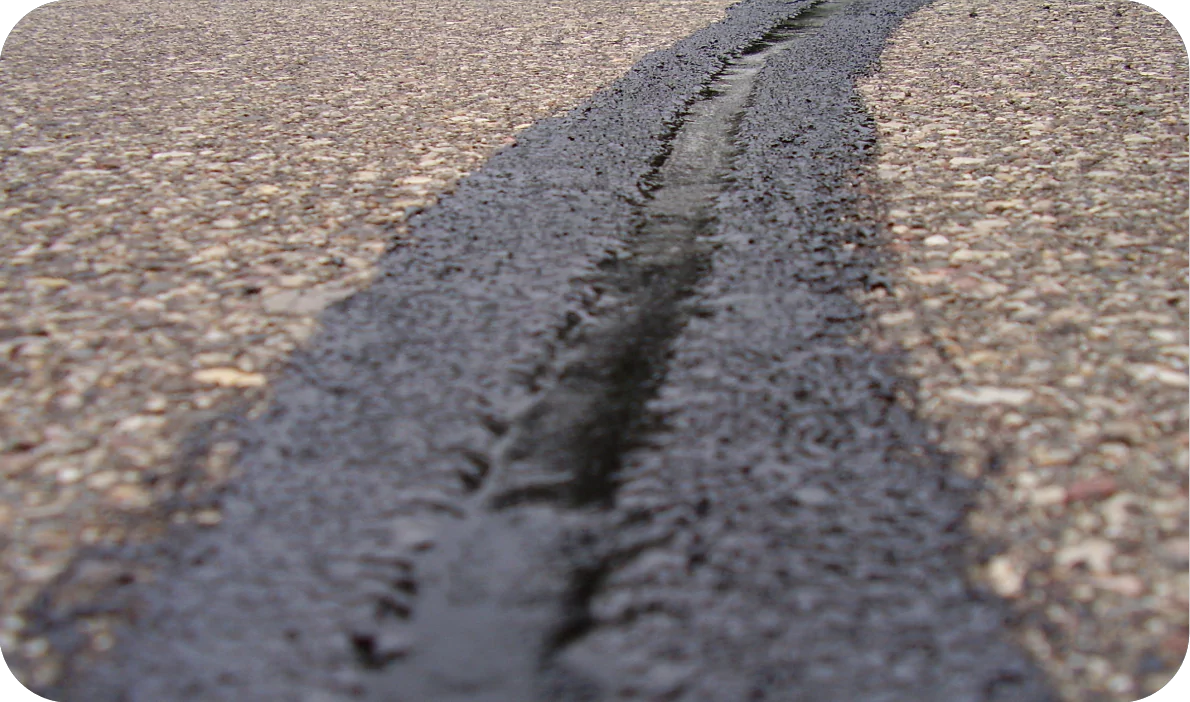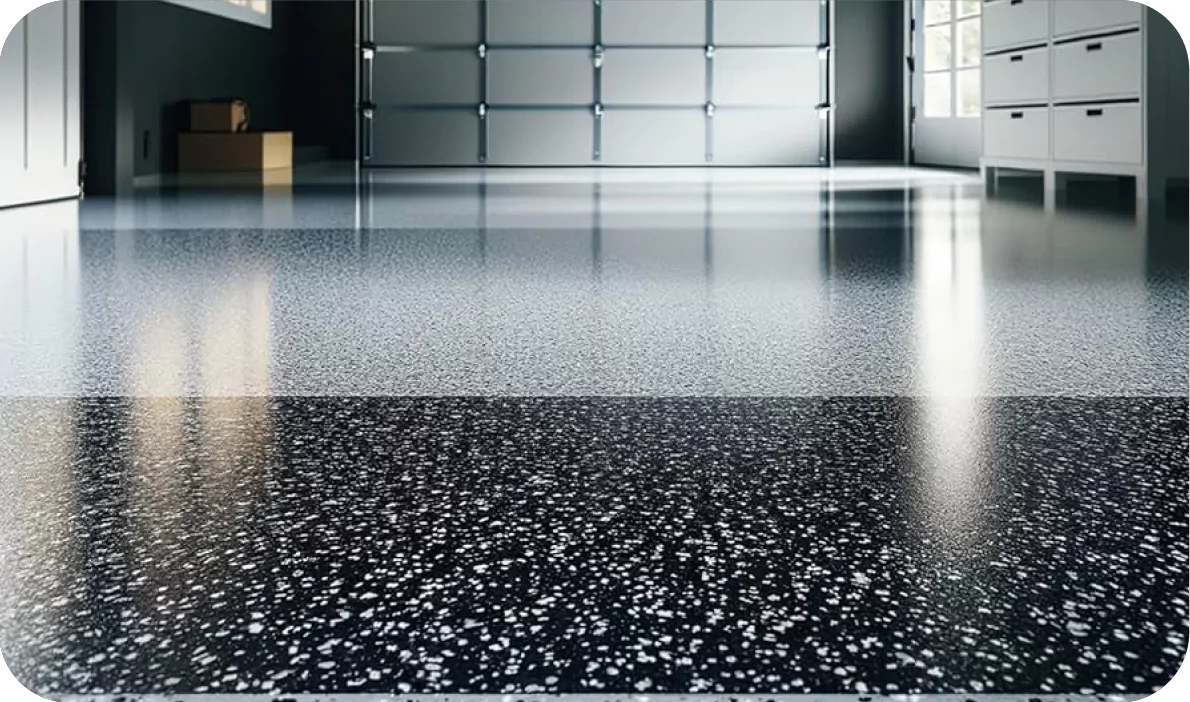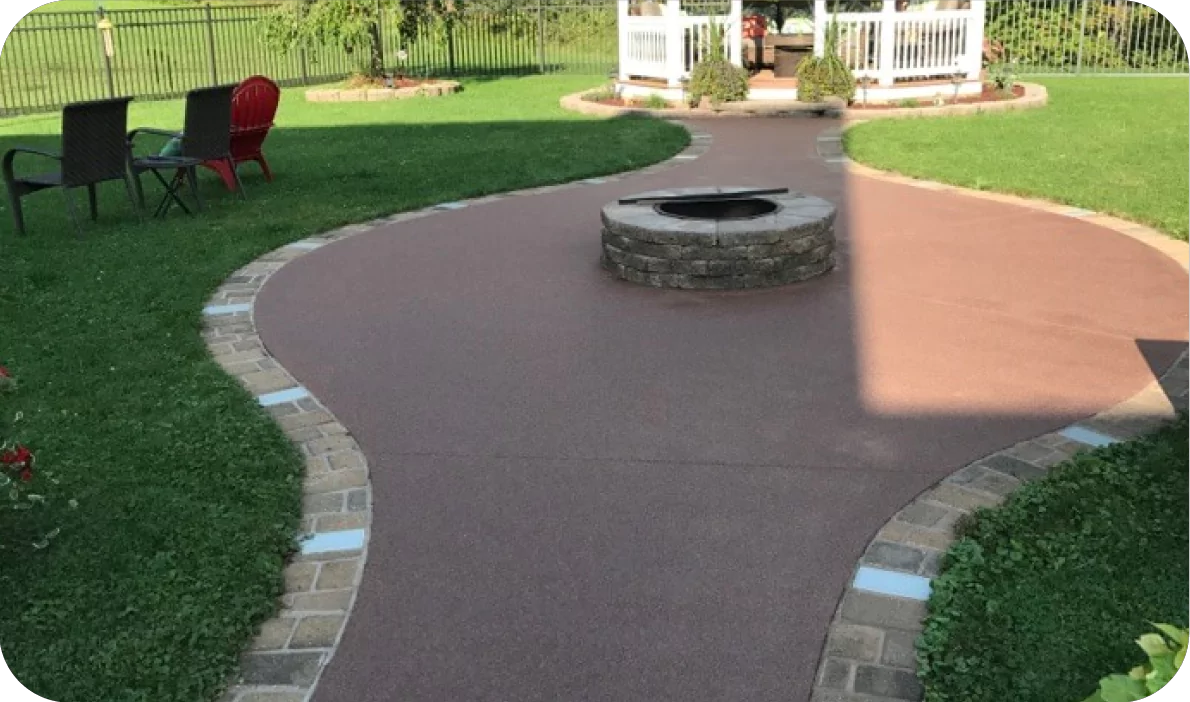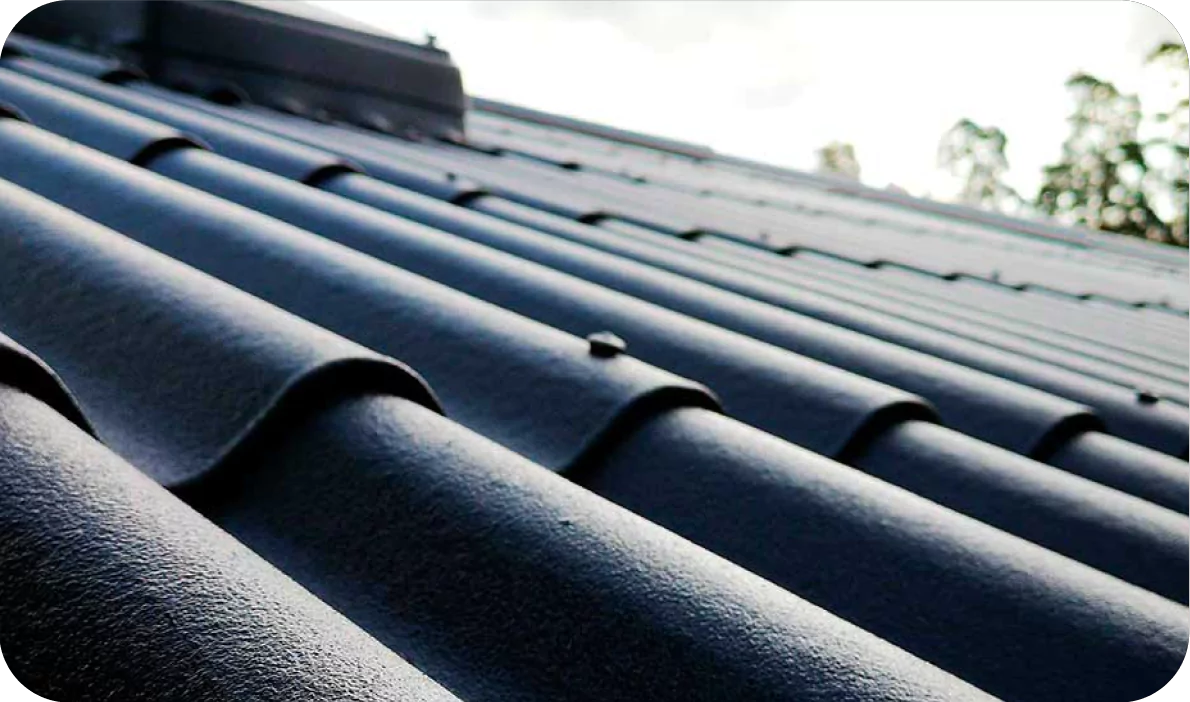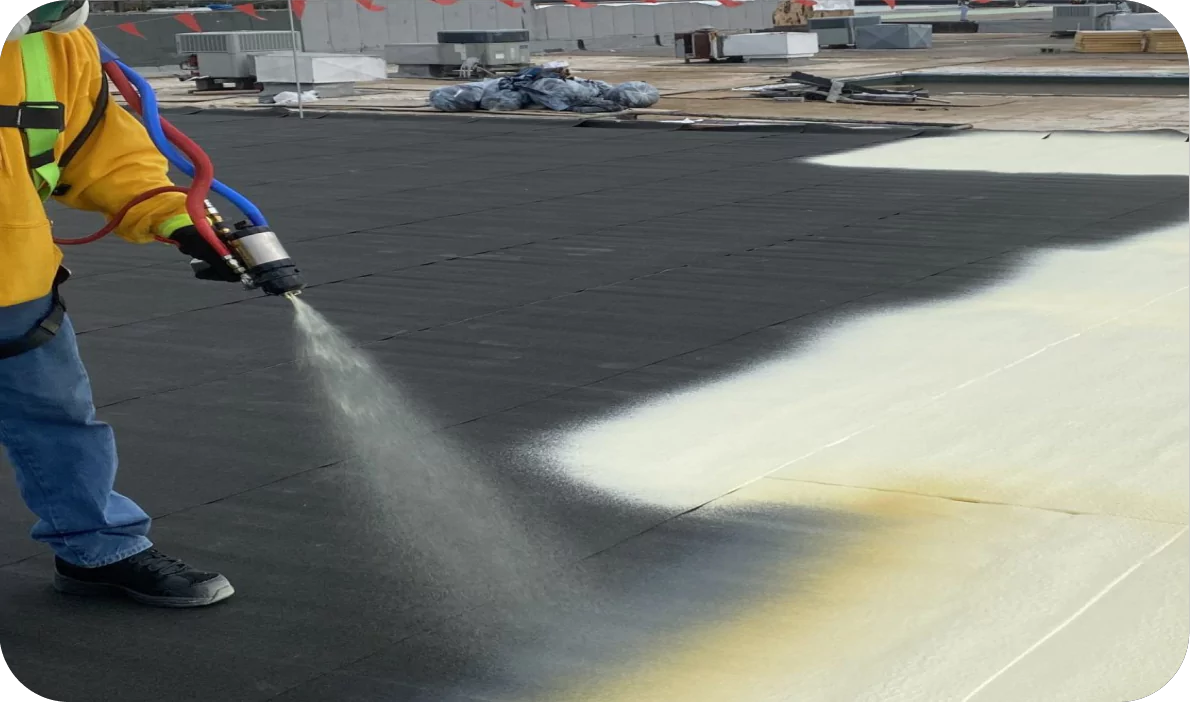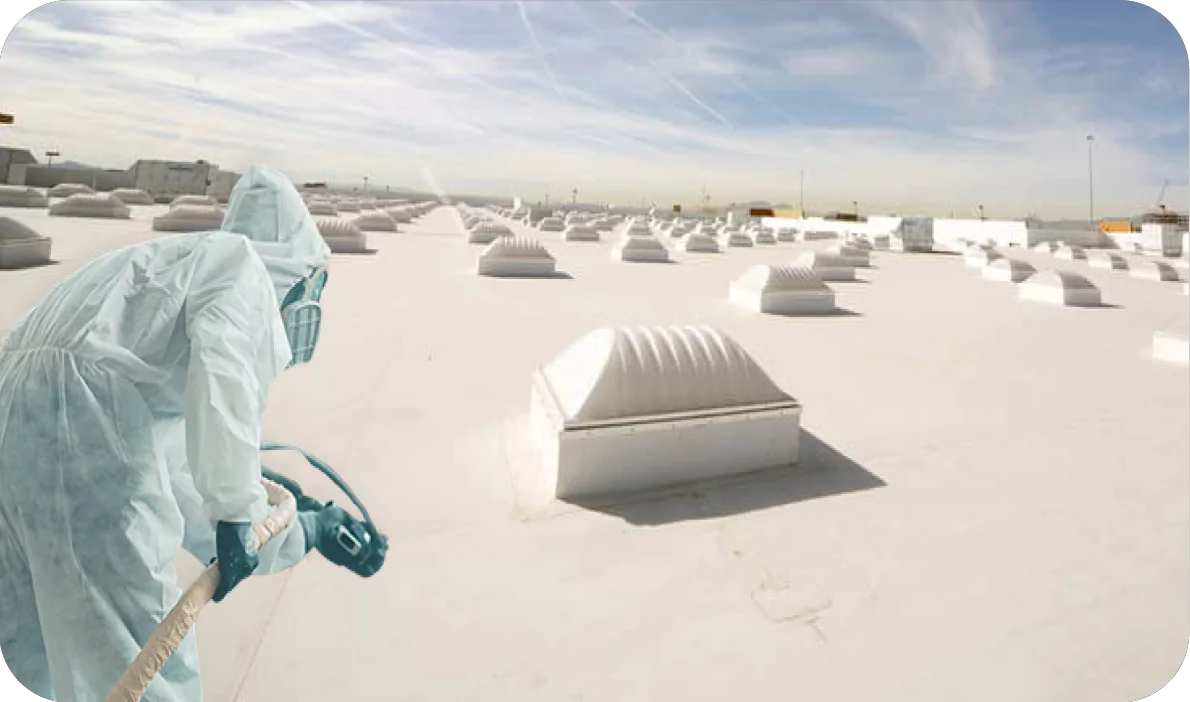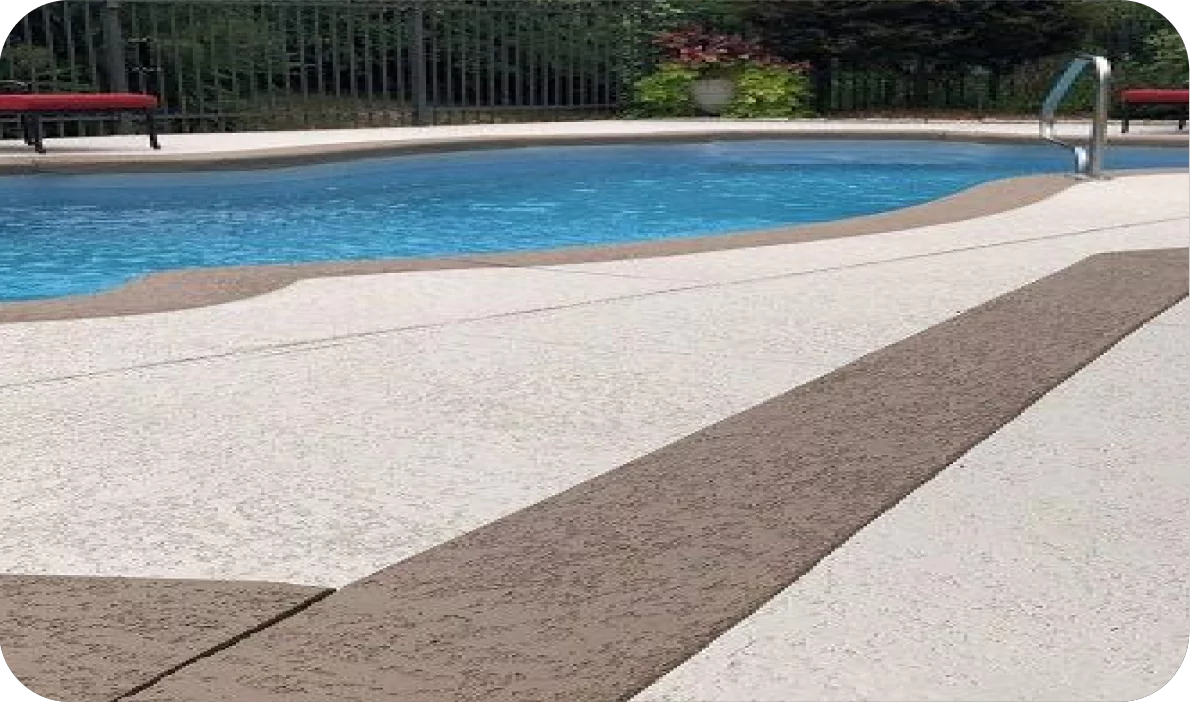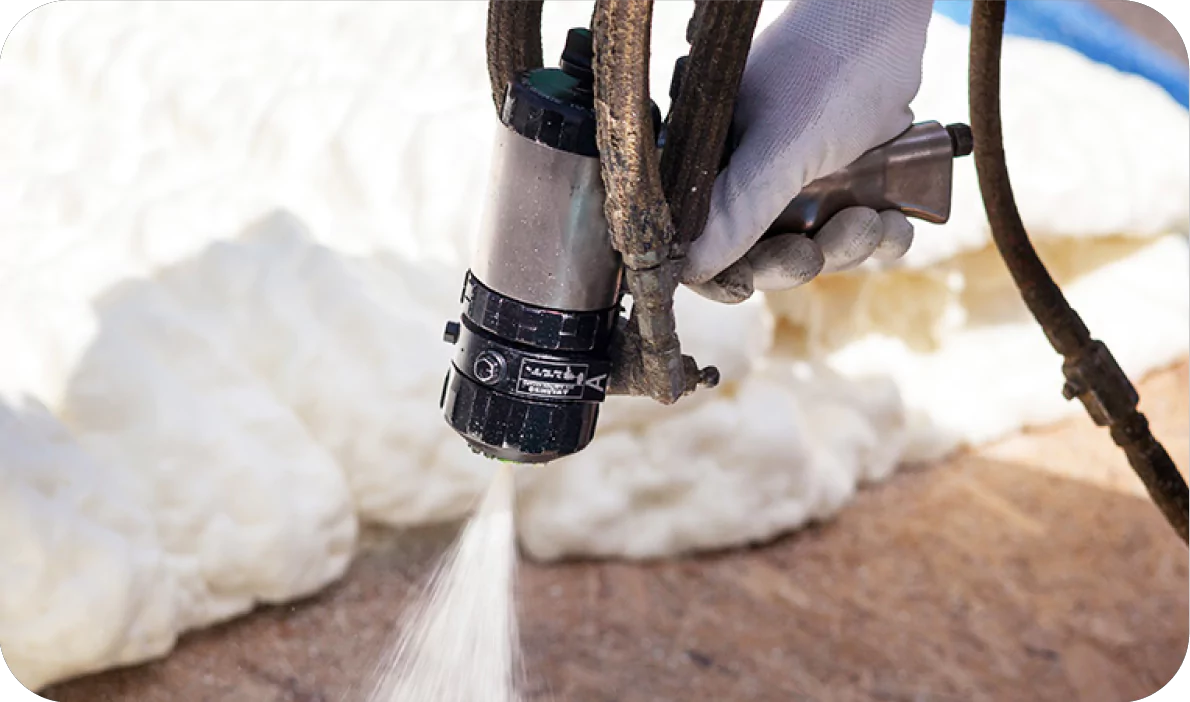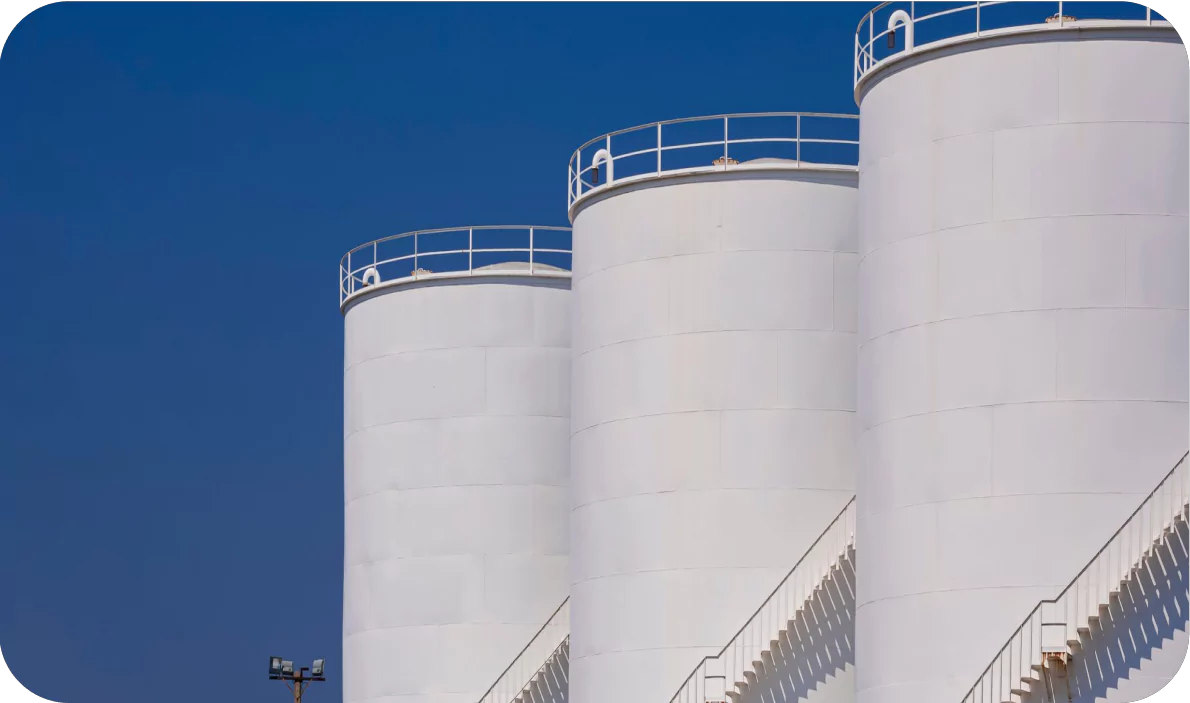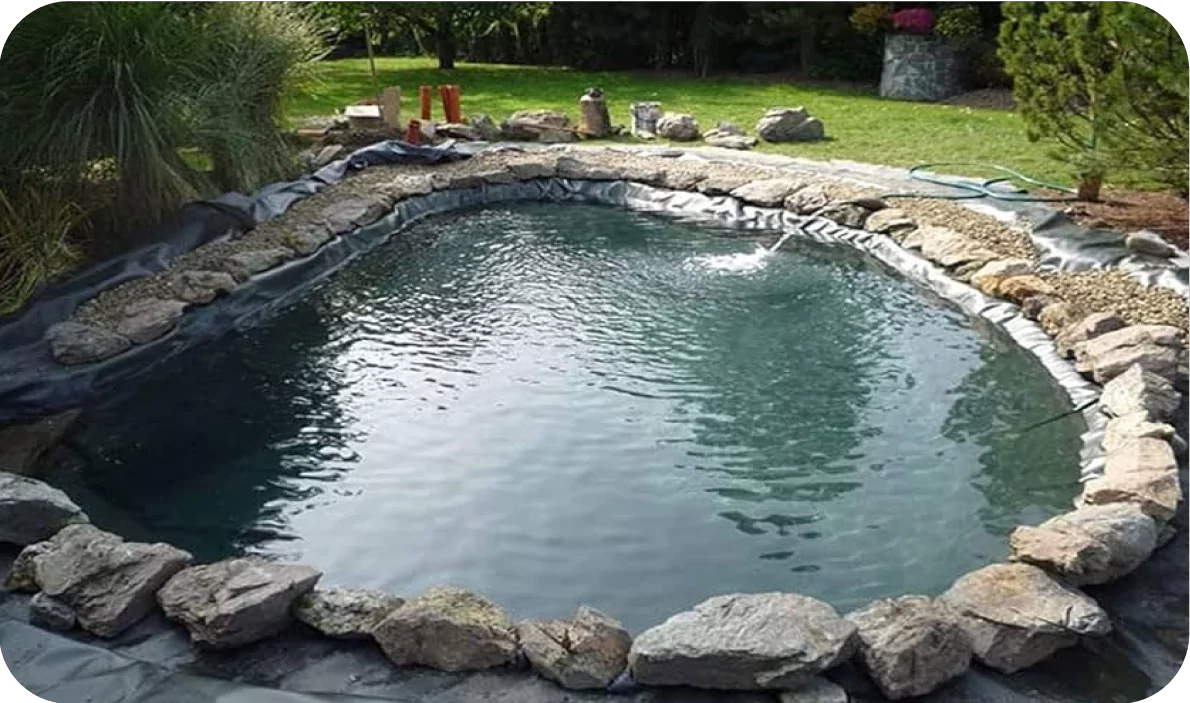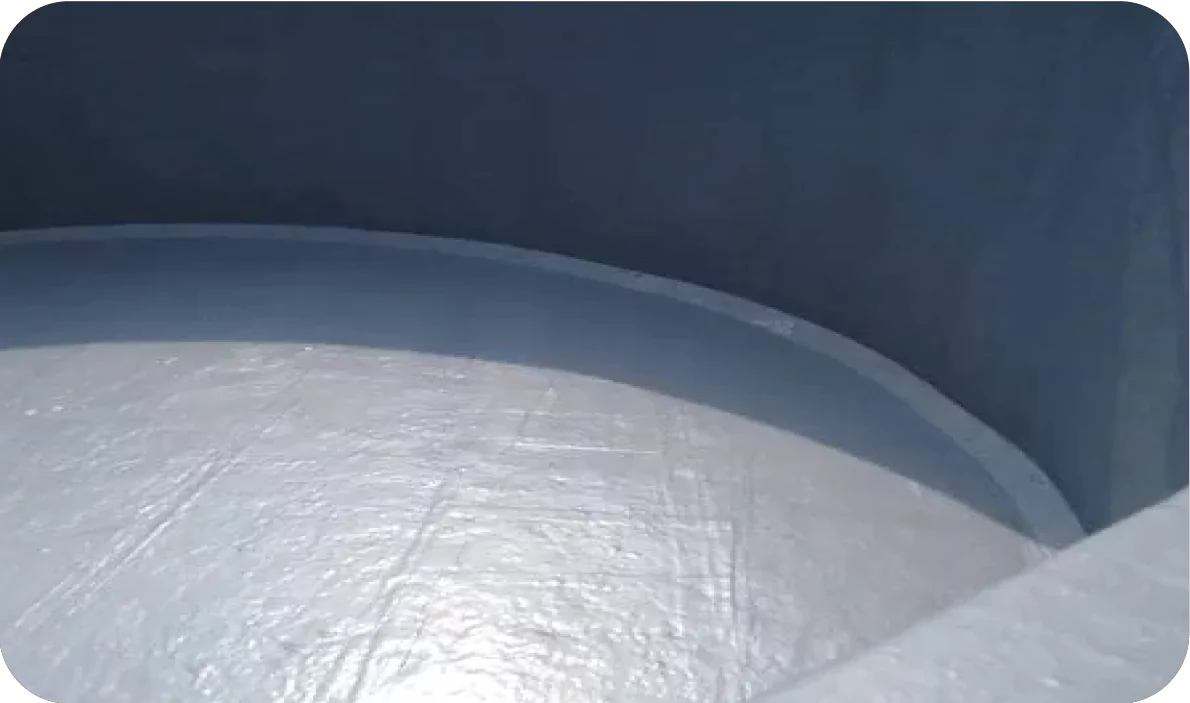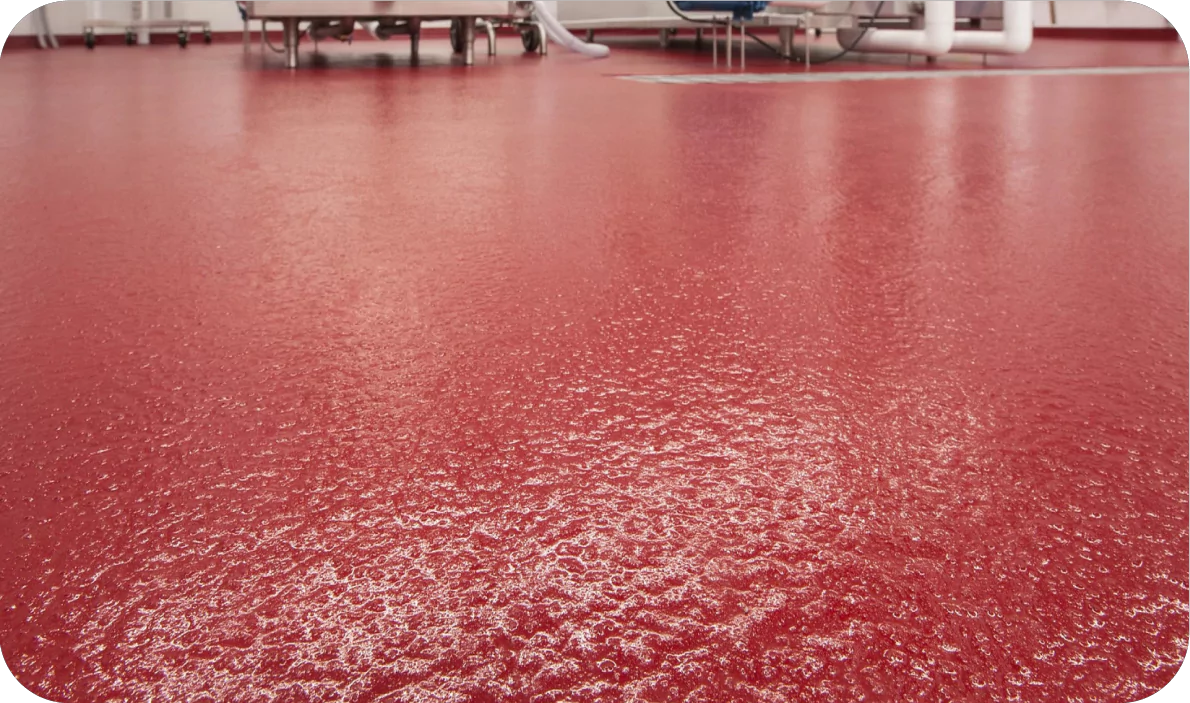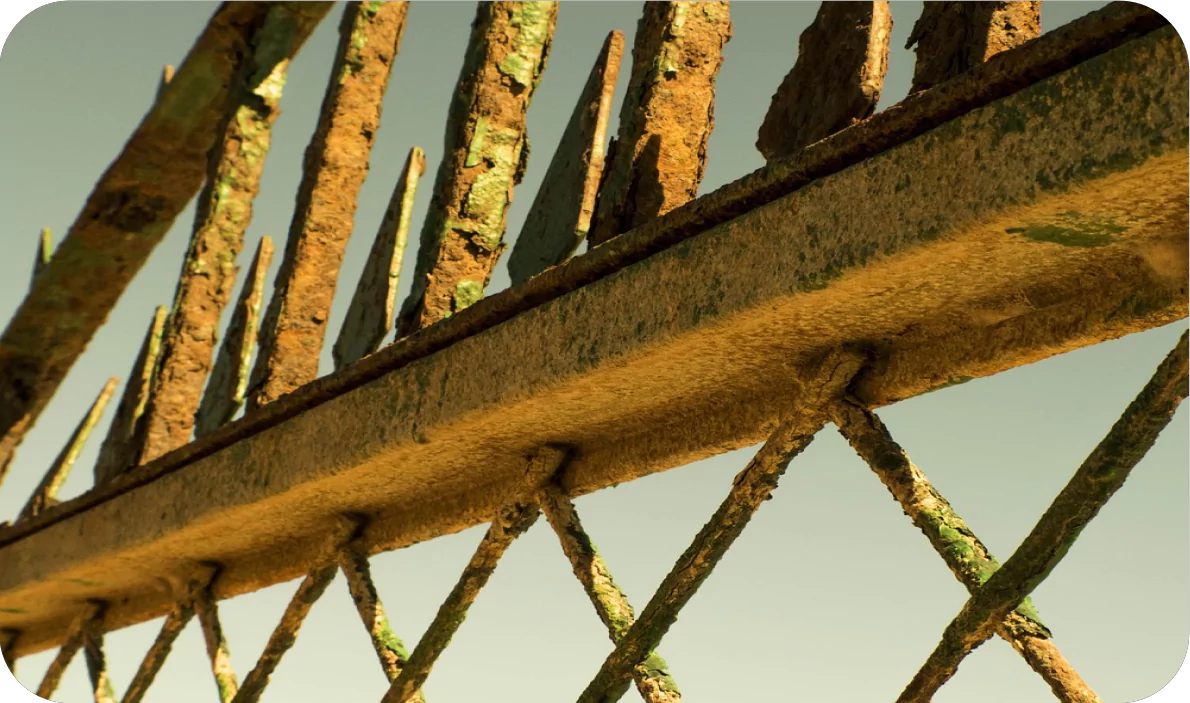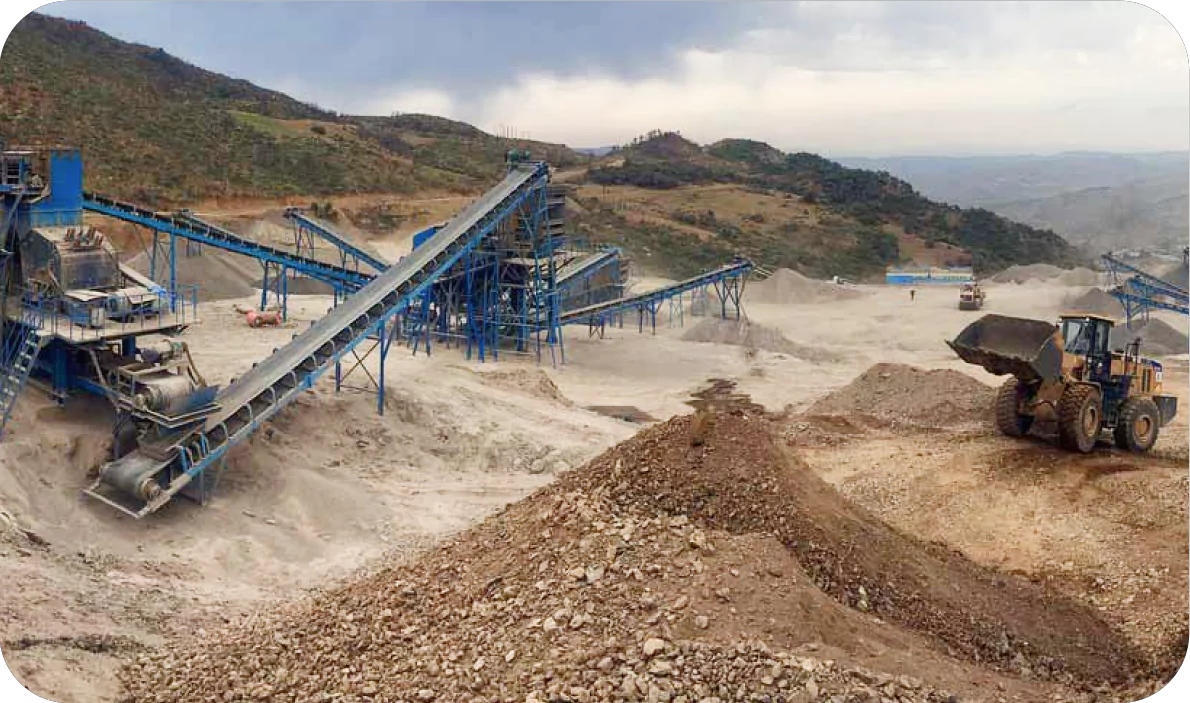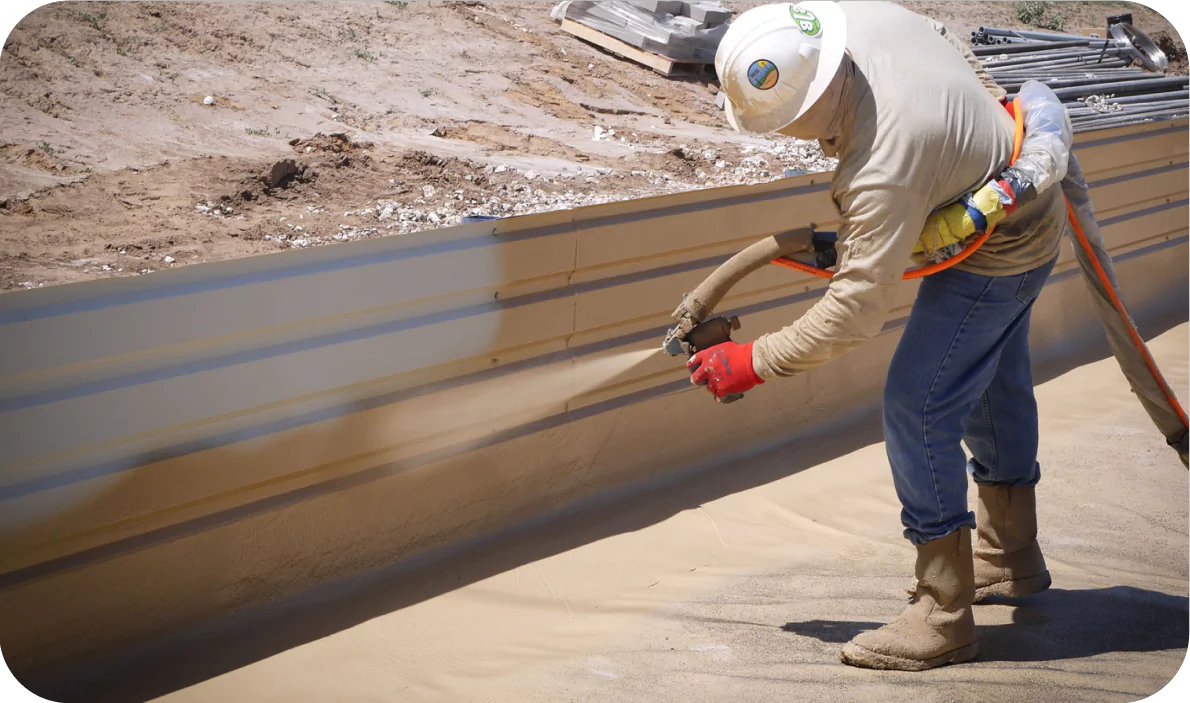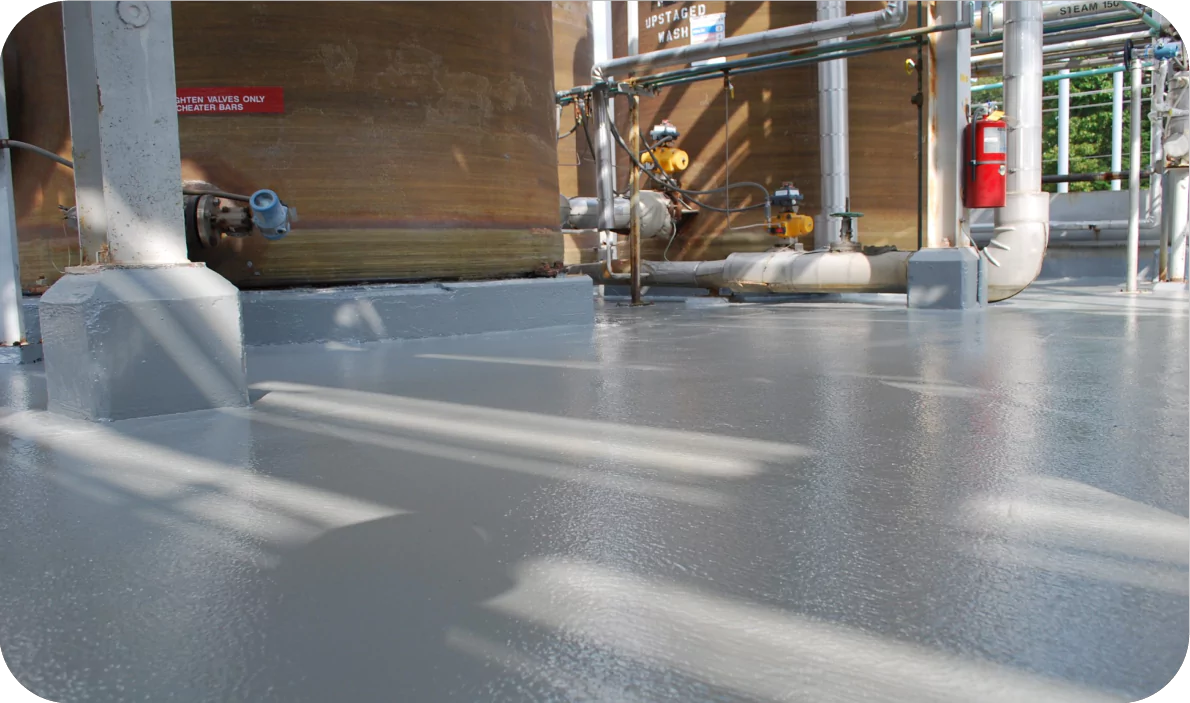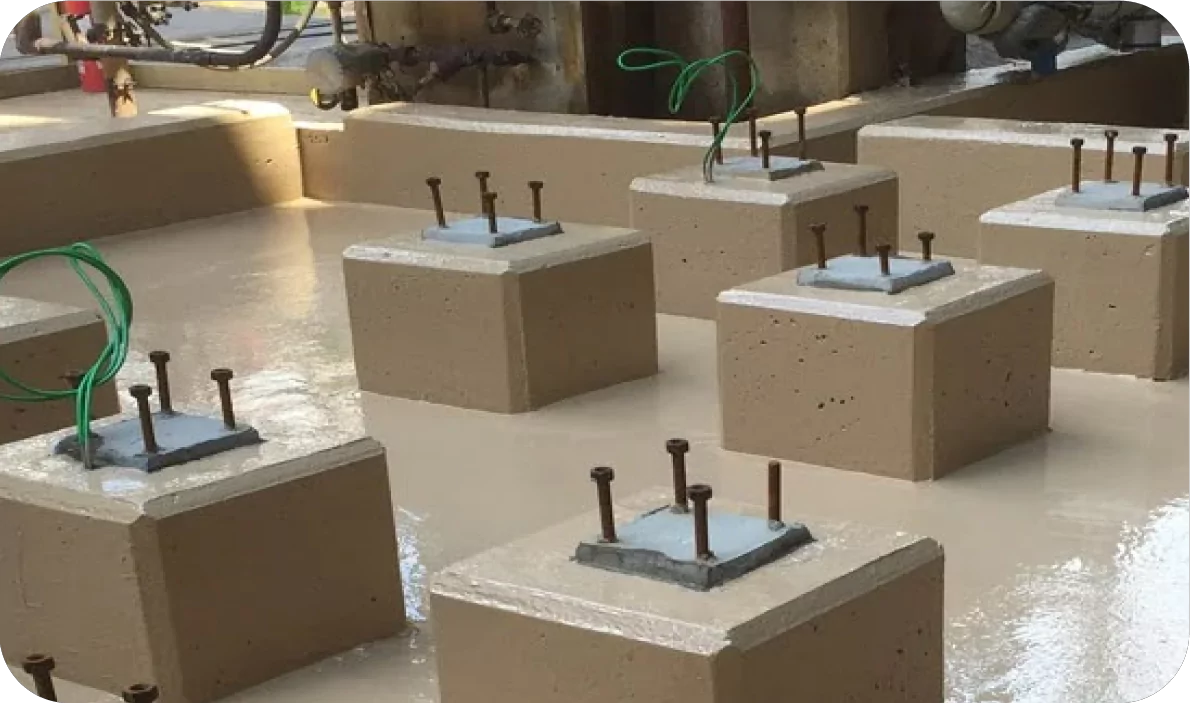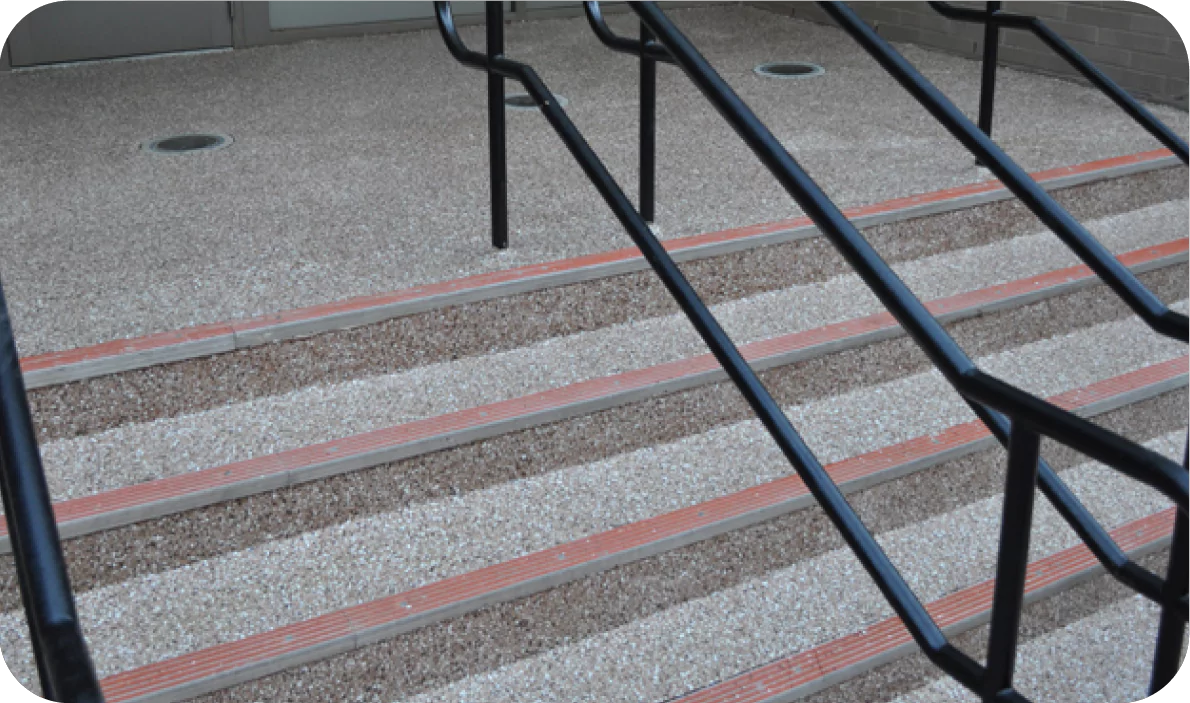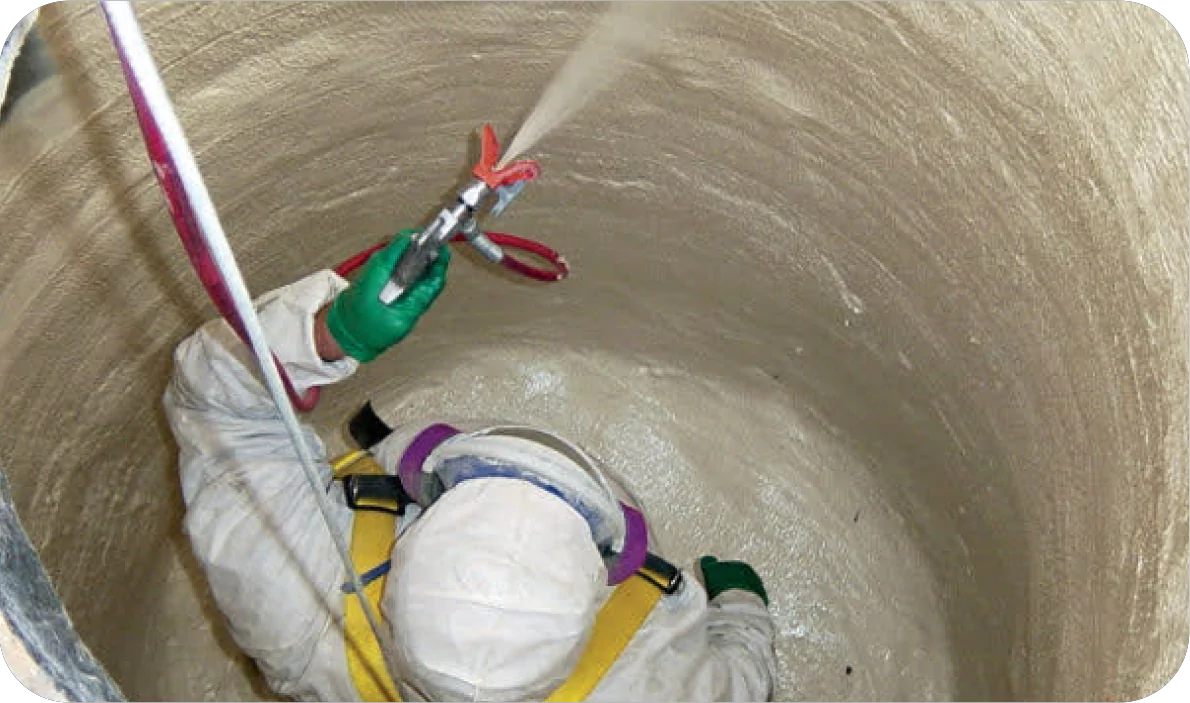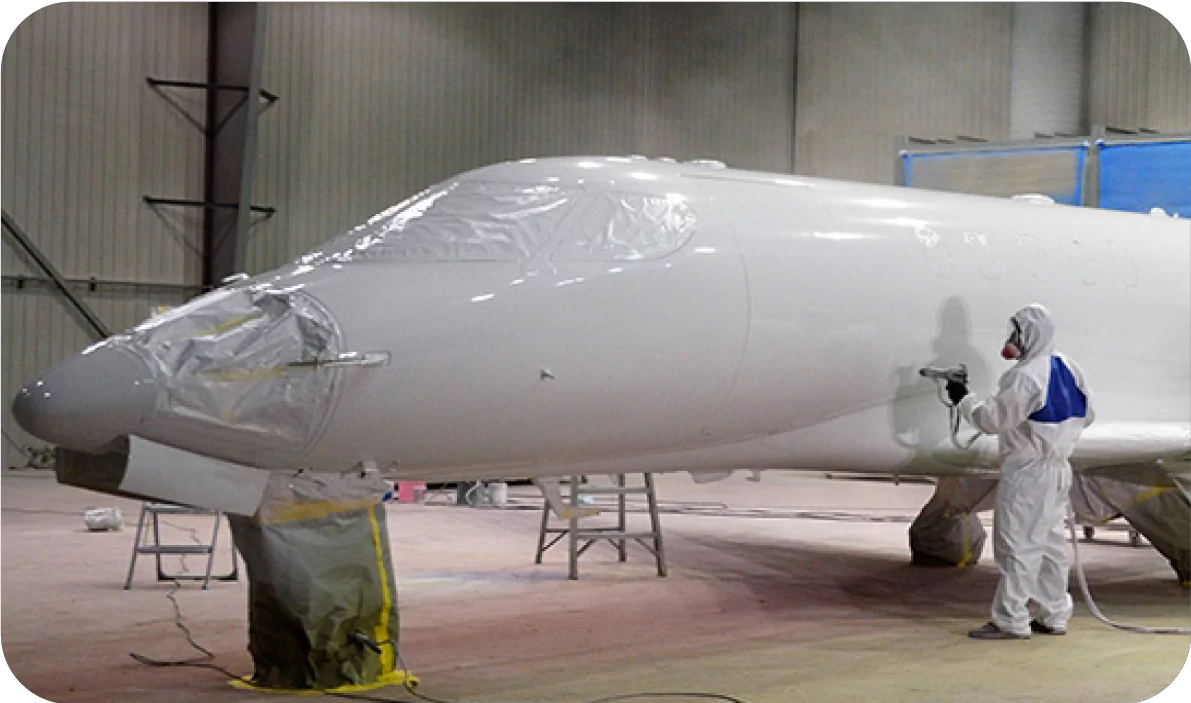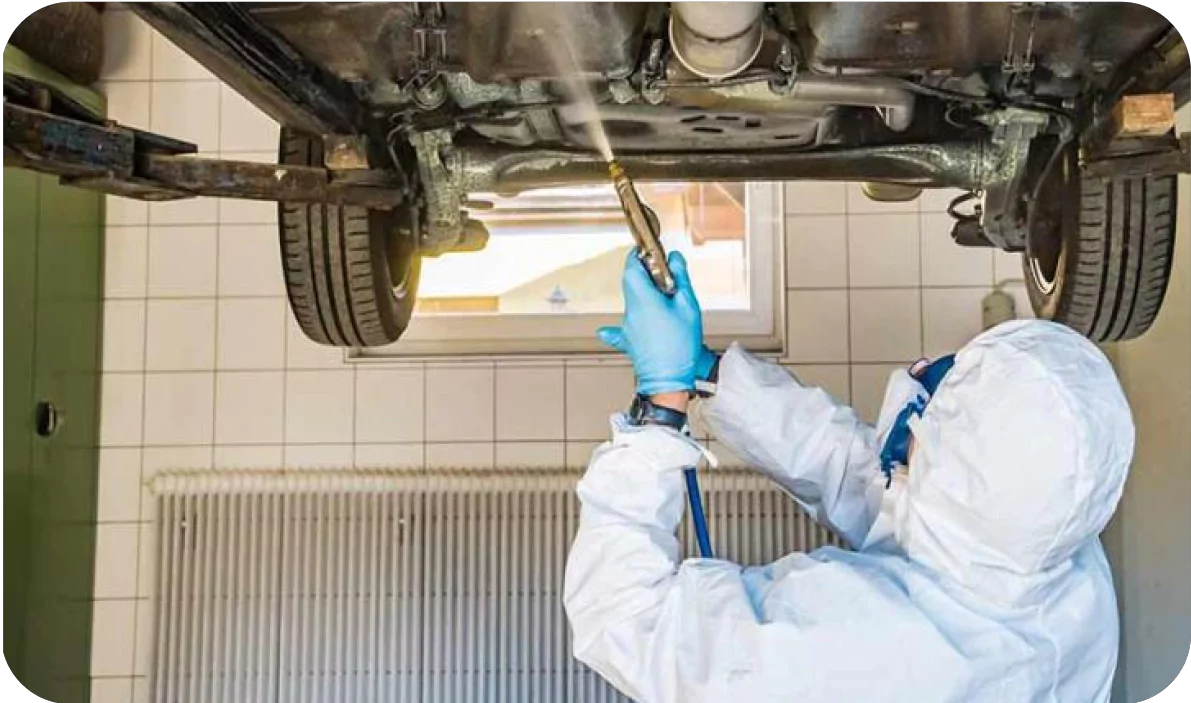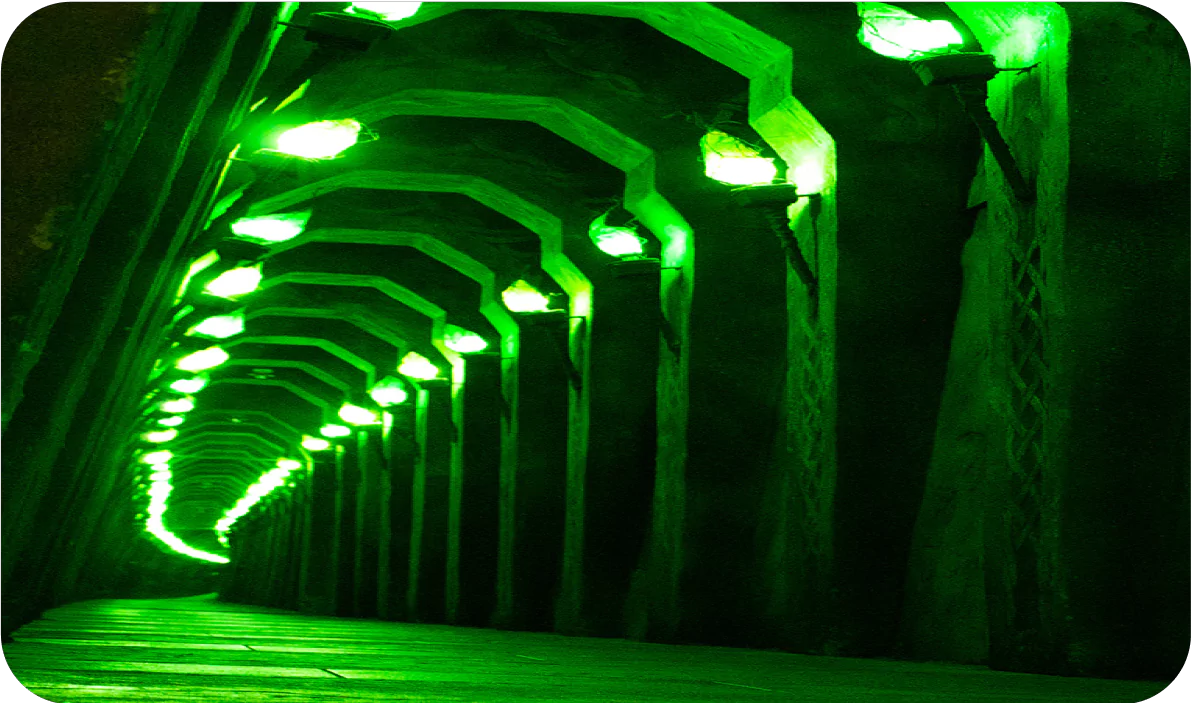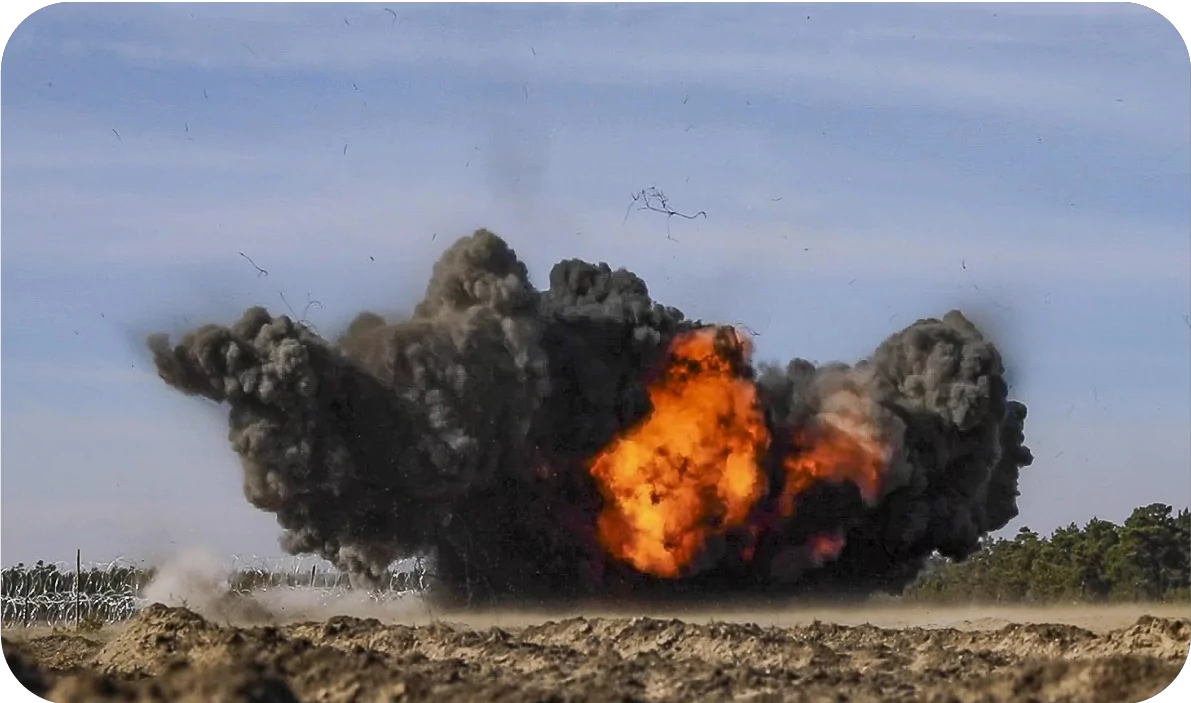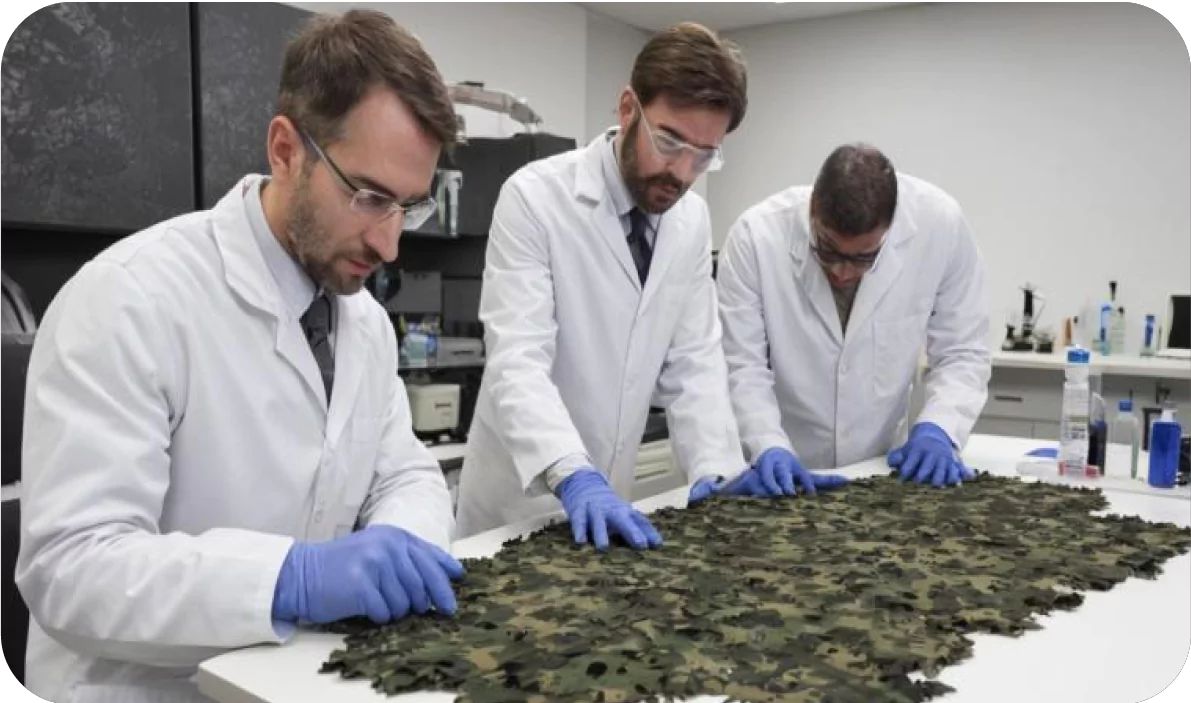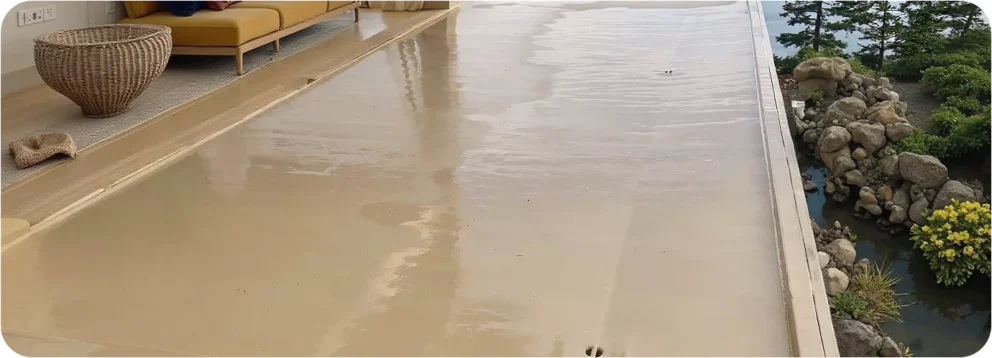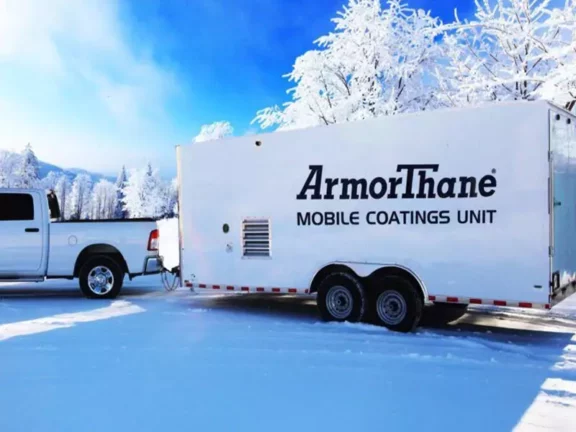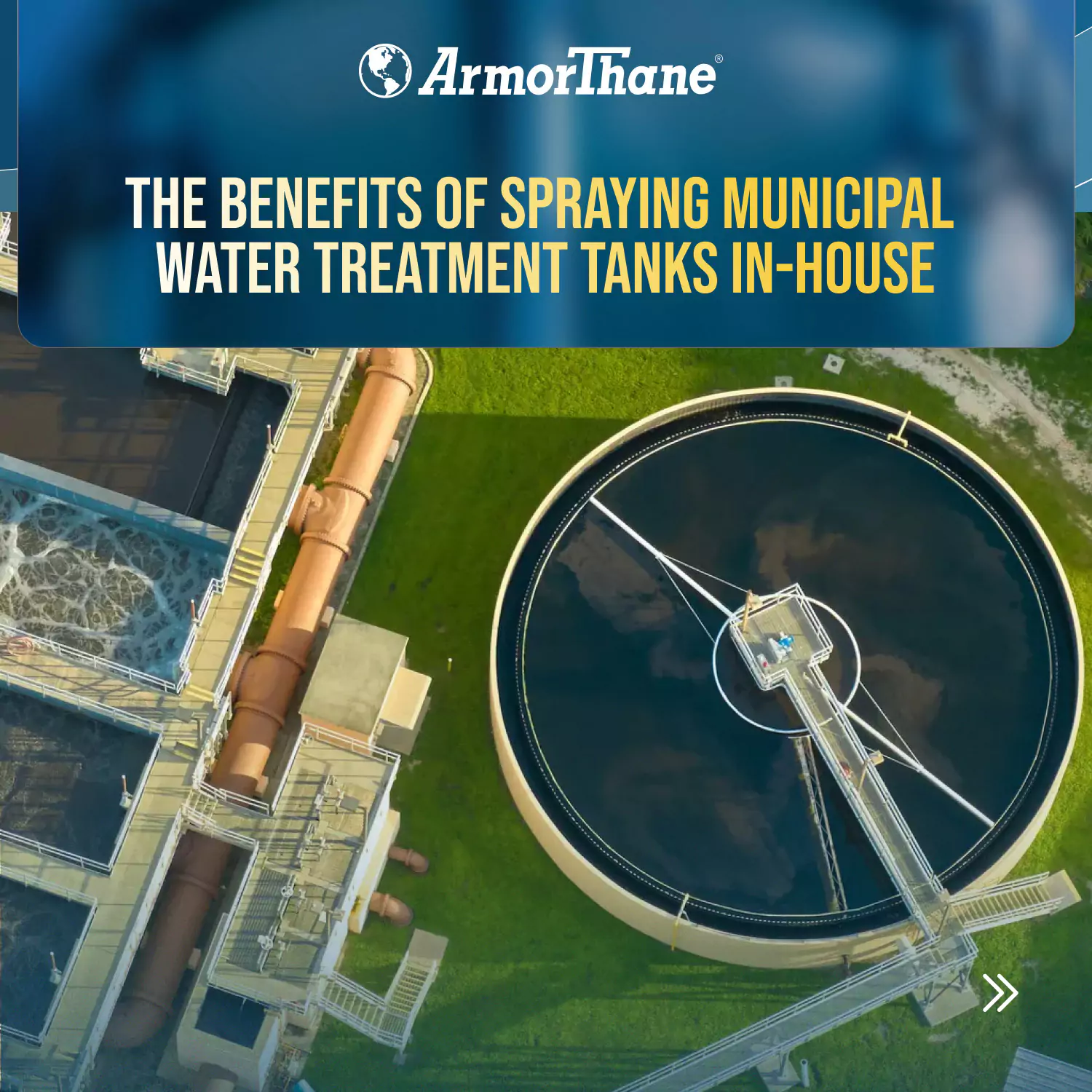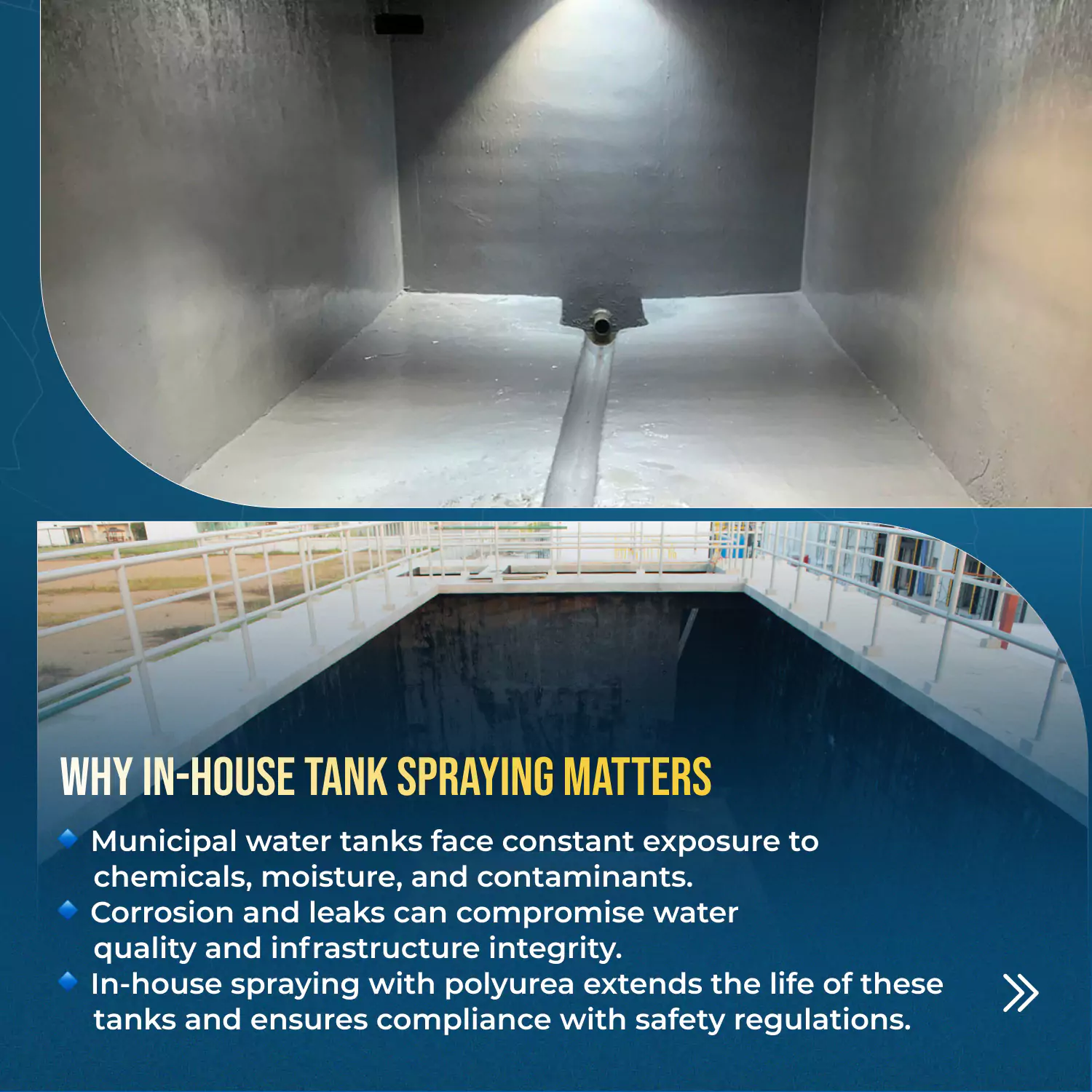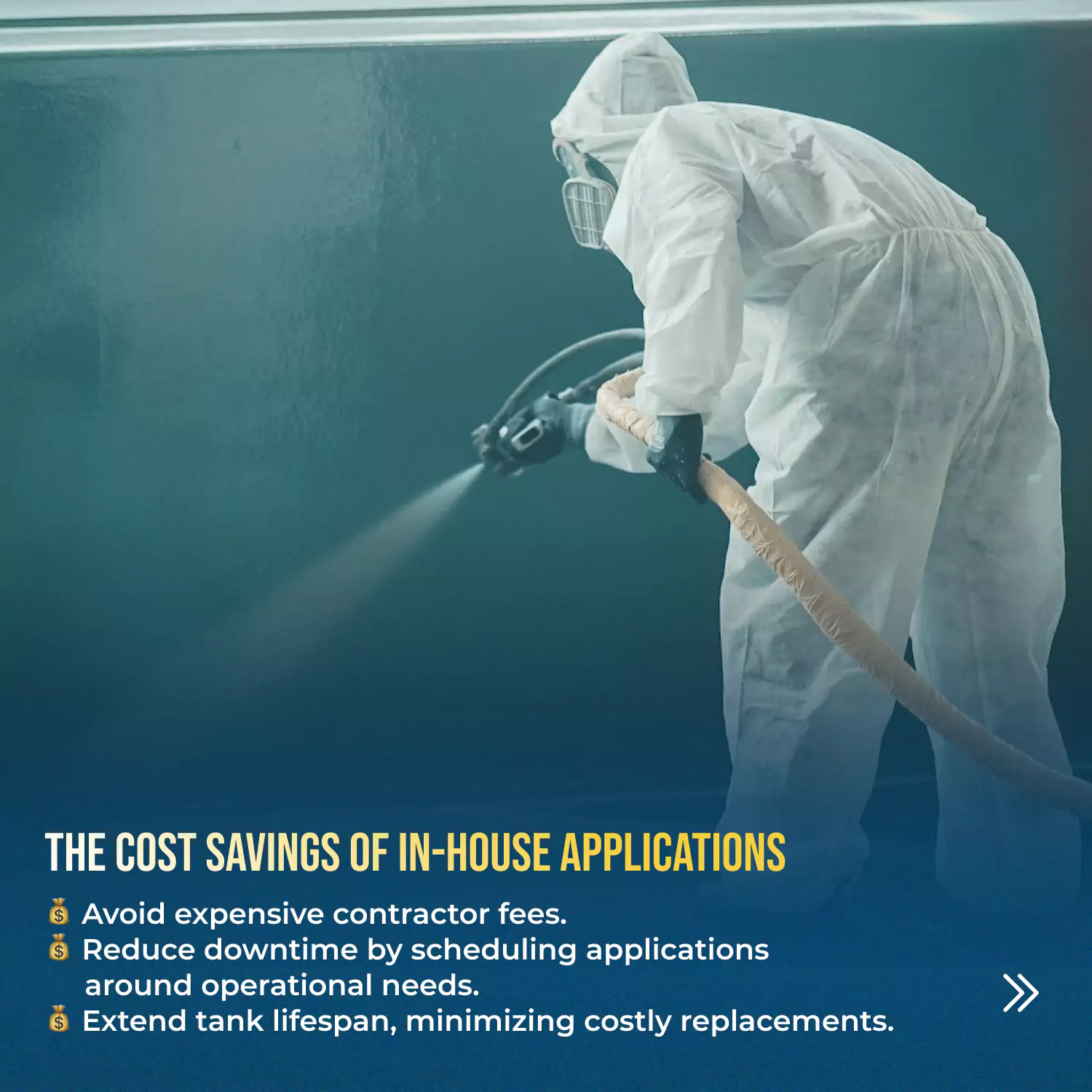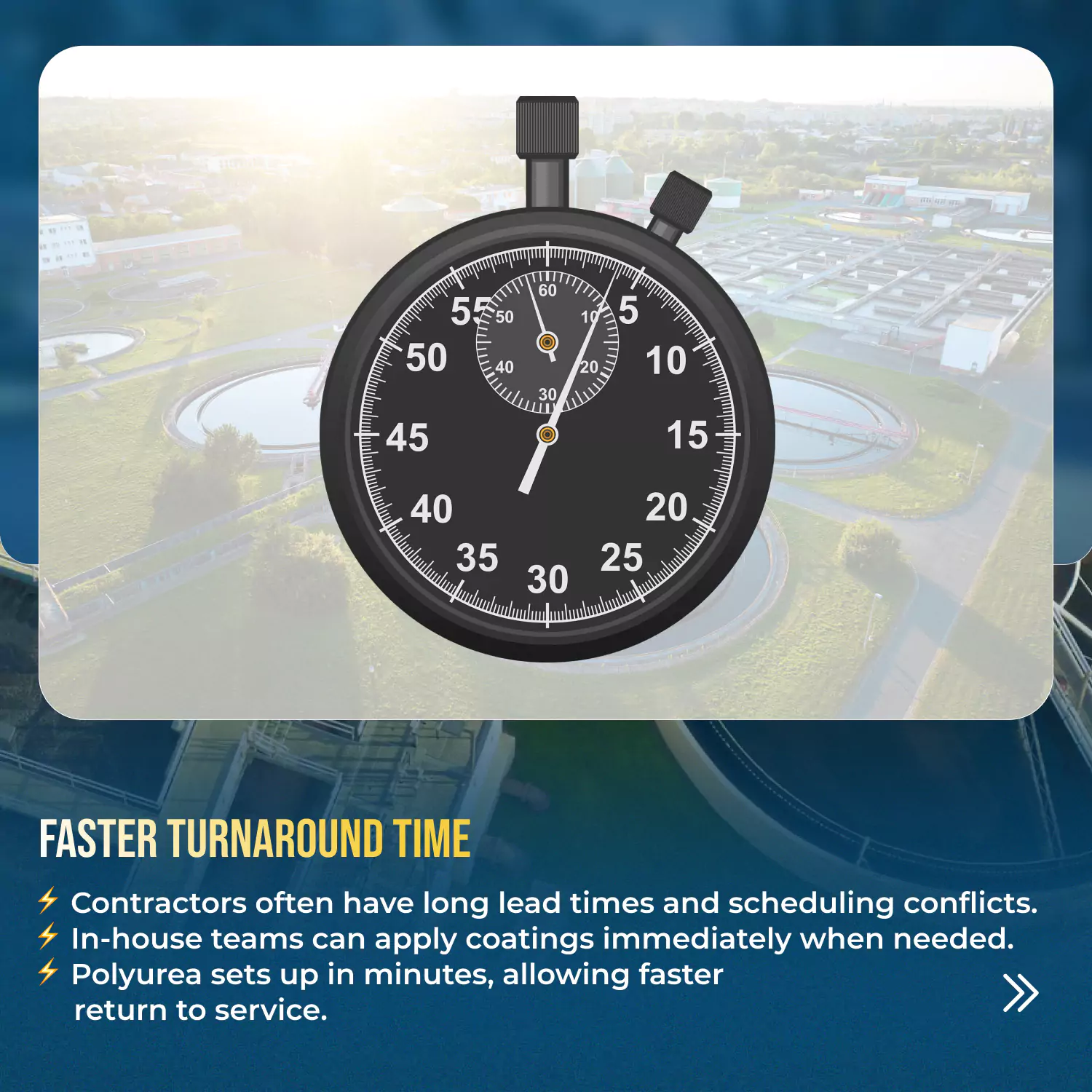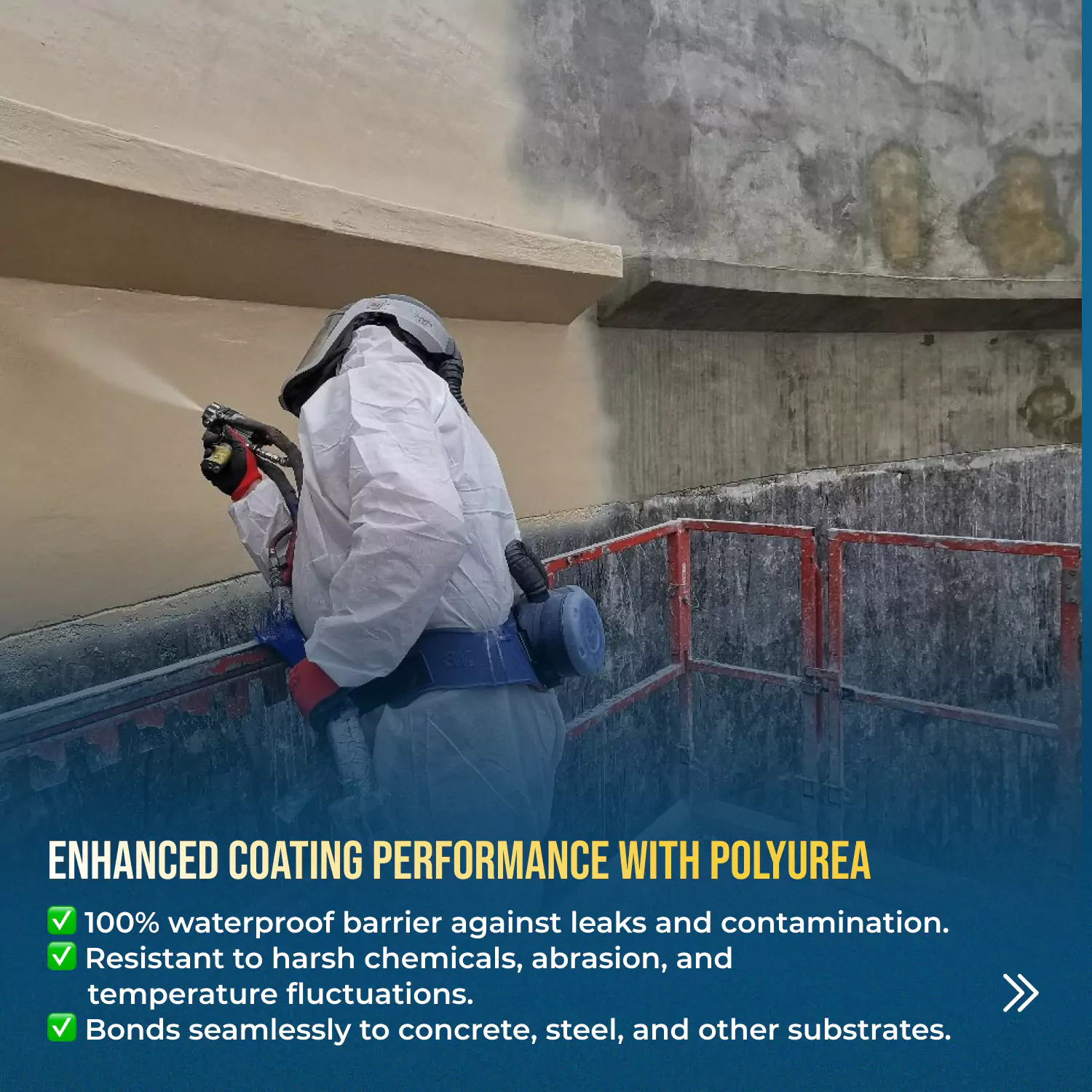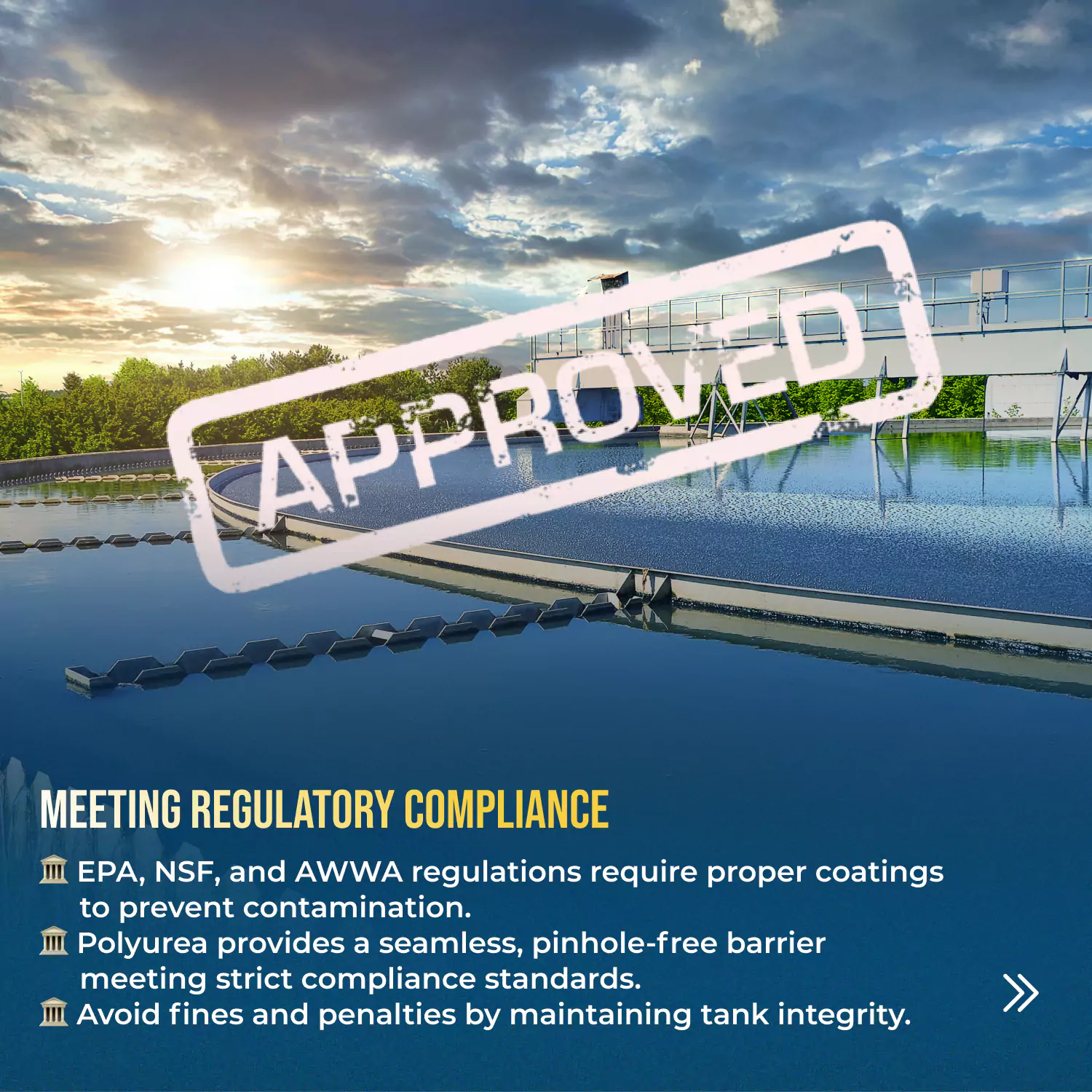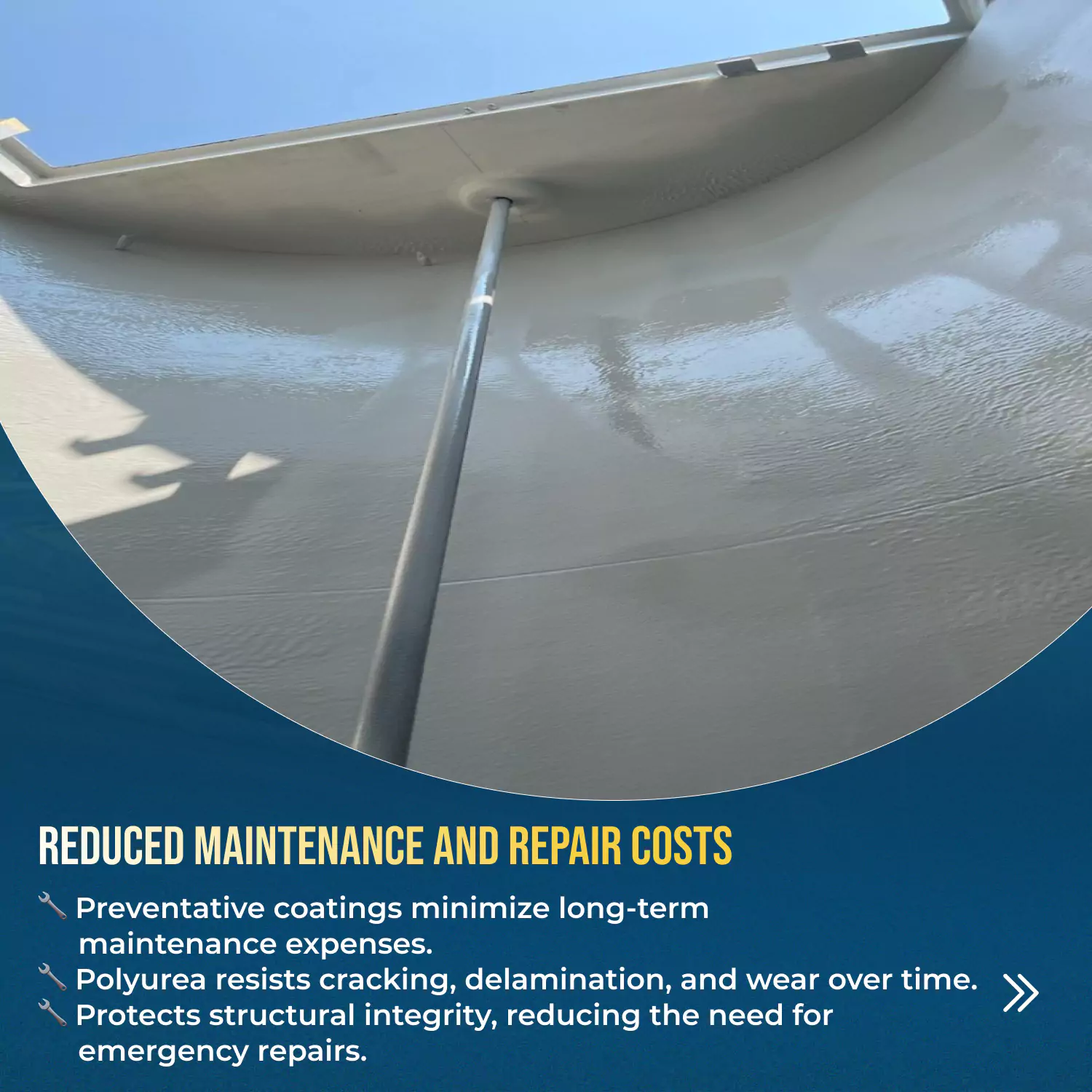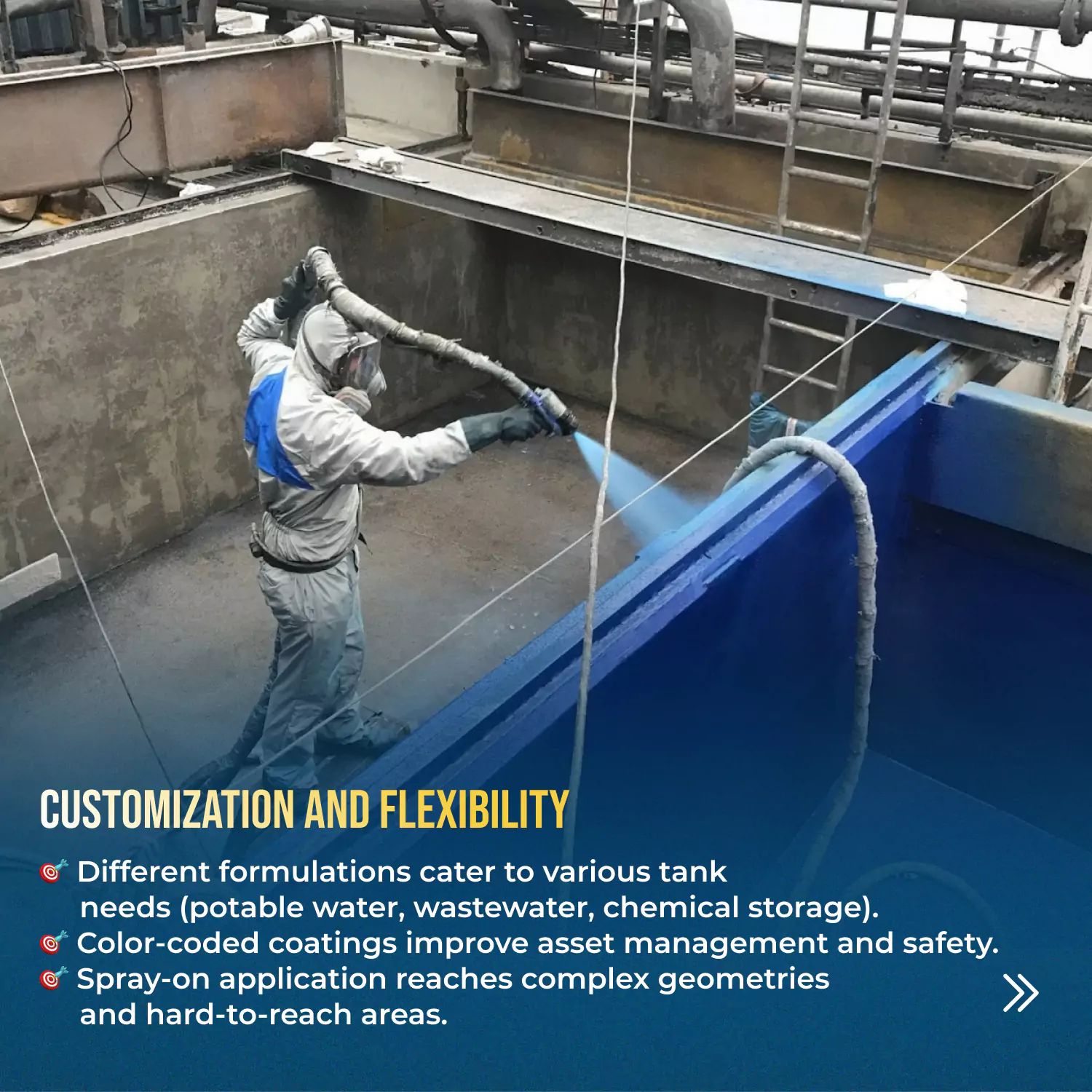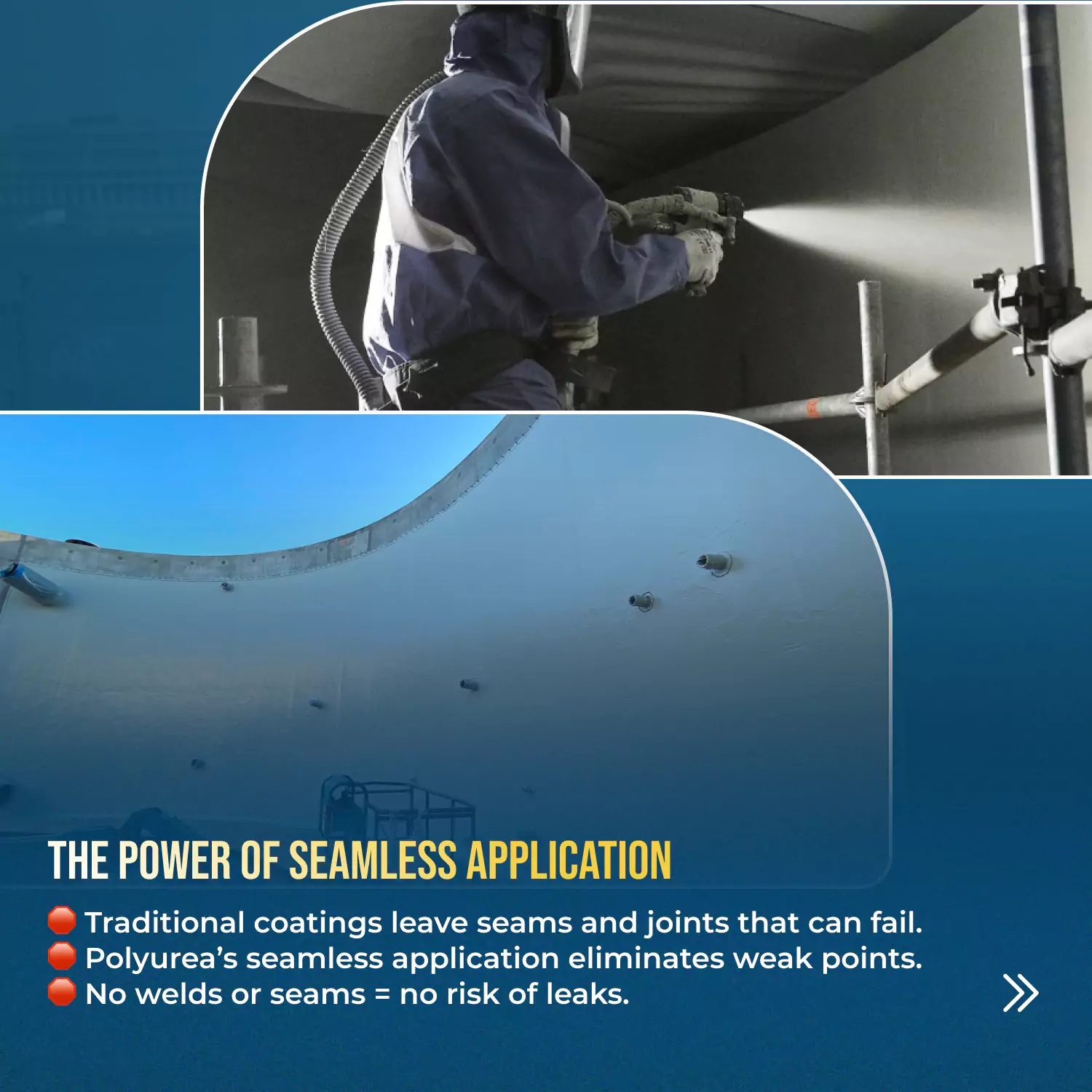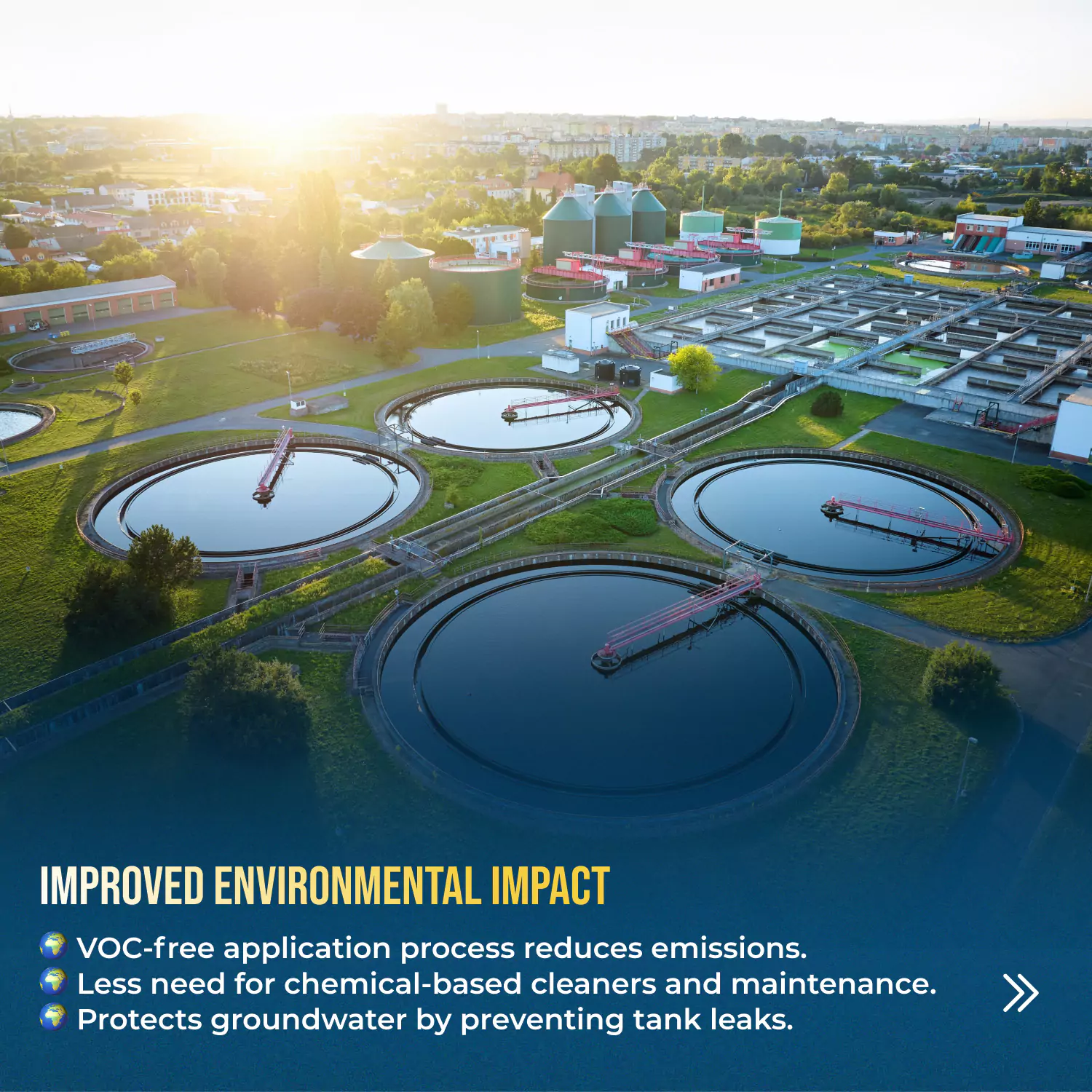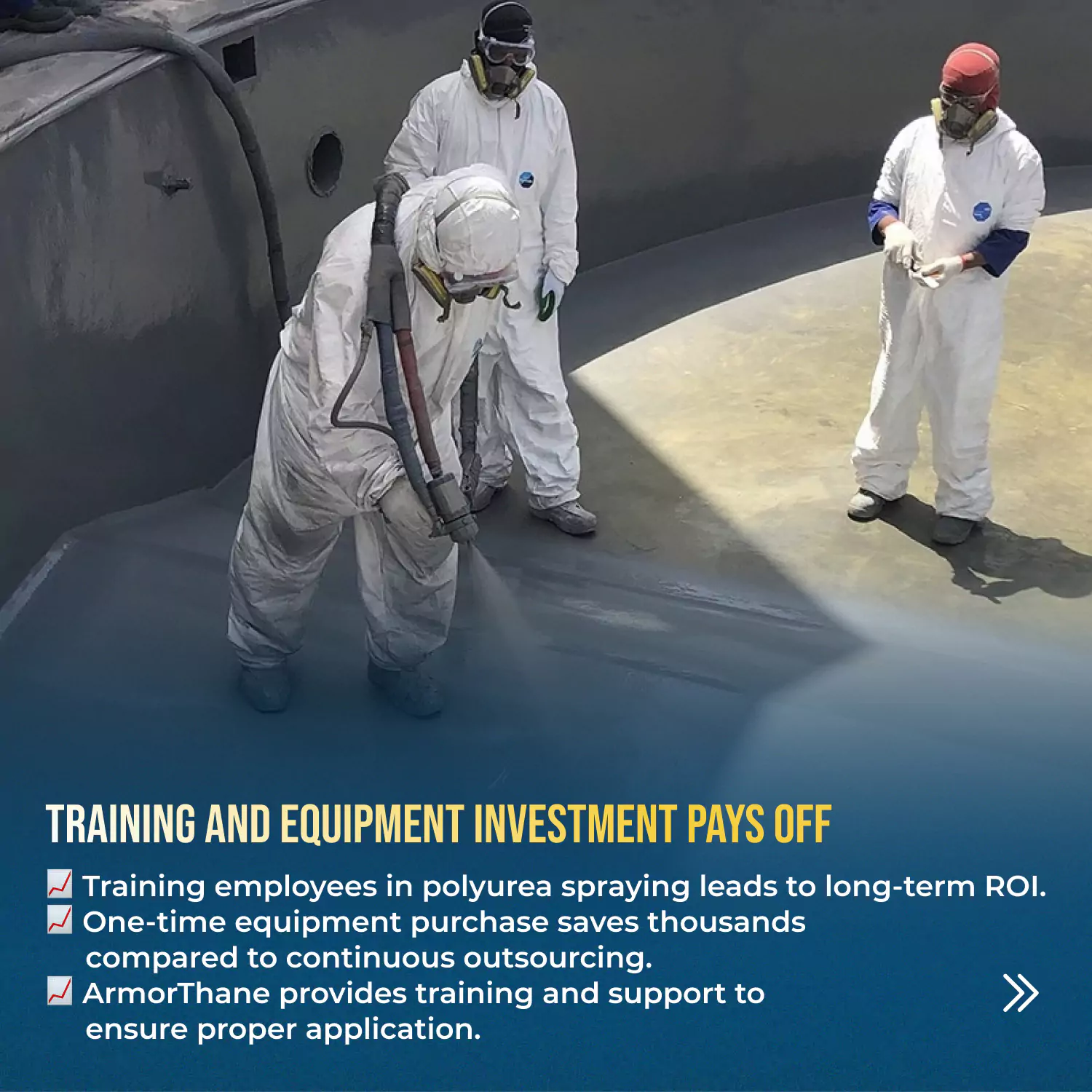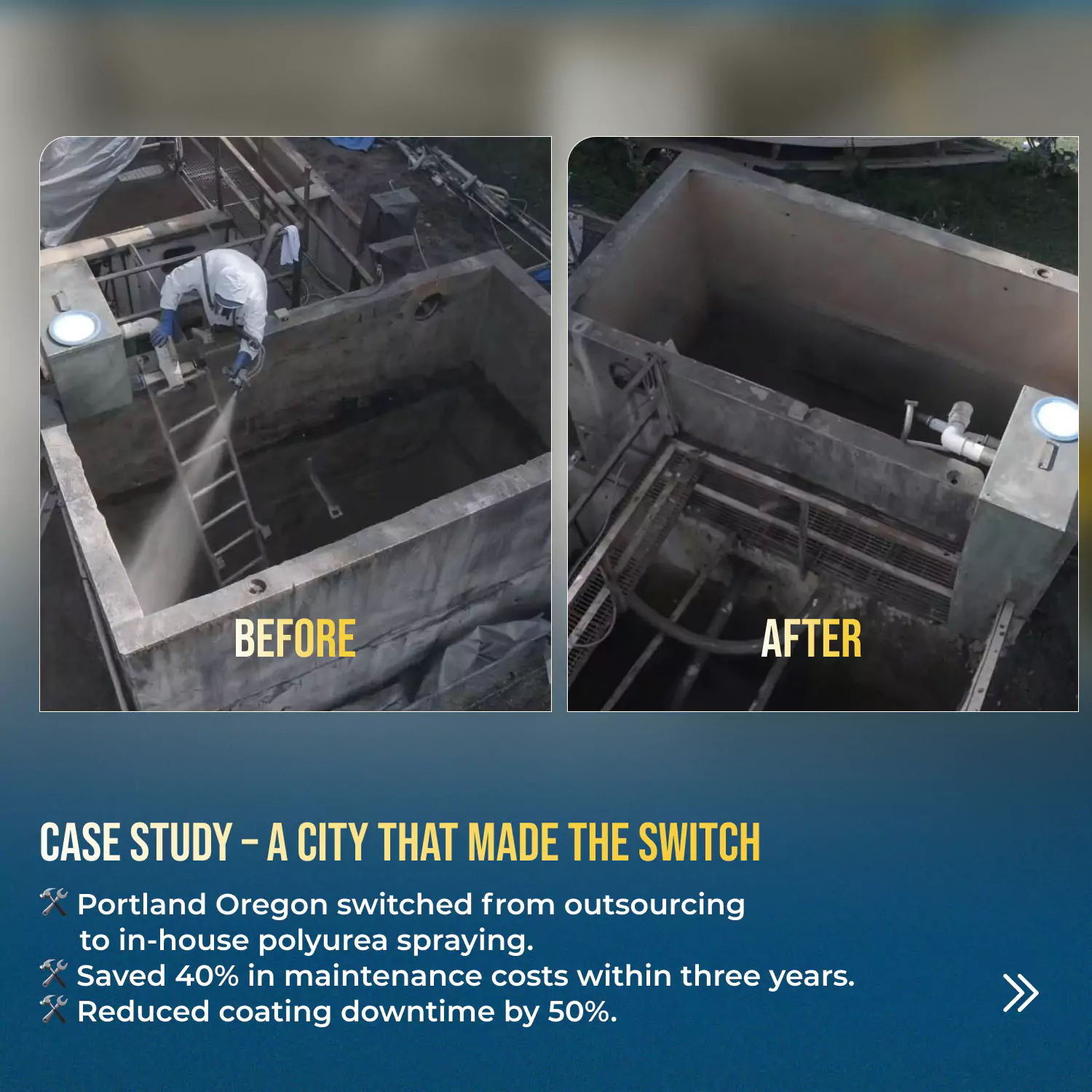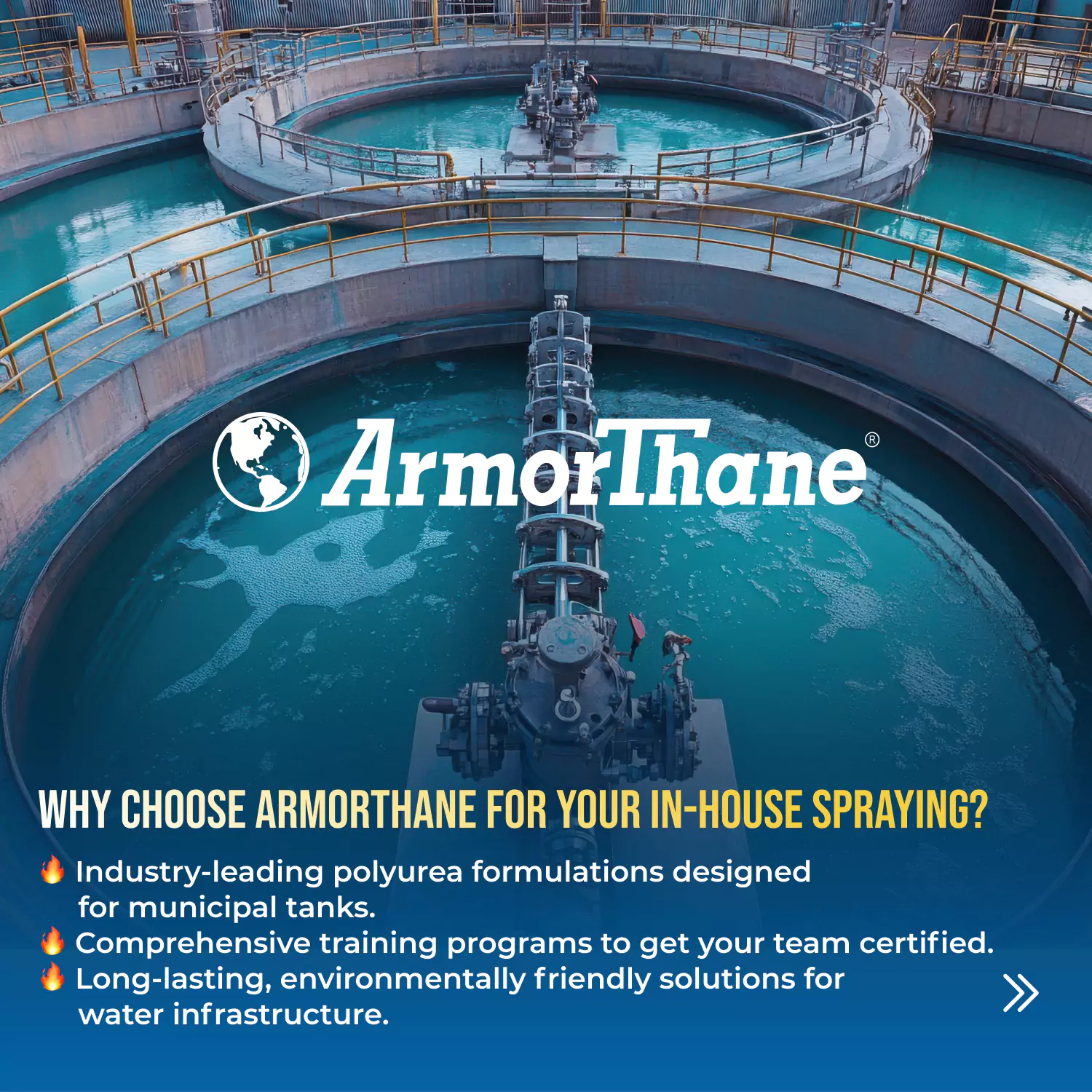WASTEWATER
COATINGS
Why Polyurea Is the Best Technology for Protecting Wastewater Infrastructure
There’s nothing easy about operating wastewater treatment facilities or maintaining their infrastructure. They’re exposed to constant, punishing conditions: high moisture, corrosive chemicals, and hazardous biological agents, which sum to equal a notoriously harsh wastewater environment. In practical terms, “harsh” means eating away at concrete and steel or otherwise damaging or degrading wastewater assets and decreasing treatment efficiency. To address this threat, wastewater facilities have long turned to traditional protective coatings like epoxies, which are effective but suffer from relatively short operational lifespans and generally lower performance.
But now, the wastewater industry is opting for more advanced coatings technology to shield treatment plants, wet wells, aeration basins, tanks, and other equipment from deterioration and, at the same time, minimize downtime and lower maintenance costs. Chief among them is polyurea, an elastomeric industrial coating that’s known for robust corrosion resistance, high elongation (high flexibility), and a very rapid cure. Polyurea can be applied as high-build layers to form a seamless lining system that adheres tenaciously to concrete and metal surfaces. It resists caustic chemicals, including hydrogen sulfide gas prevalent in sewers, and reliably waterproofs without suffering from exposure to moisture itself. Bridging cracks and sealing porous substrates, polyurea coating systems protect against leaks and chemical attacks that would otherwise compromise a wastewater treatment plant over time.
But now, the wastewater industry is opting for more advanced coatings technology to shield treatment plants, wet wells, aeration basins, tanks, and other equipment from deterioration and, at the same time, minimize downtime and lower maintenance costs. Chief among them is polyurea, an elastomeric industrial coating that’s known for robust corrosion resistance, high elongation (high flexibility), and a very rapid cure. Polyurea can be applied as high-build layers to form a seamless lining system that adheres tenaciously to concrete and metal surfaces. It resists caustic chemicals, including hydrogen sulfide gas prevalent in sewers, and reliably waterproofs without suffering from exposure to moisture itself. Bridging cracks and sealing porous substrates, polyurea coating systems protect against leaks and chemical attacks that would otherwise compromise a wastewater treatment plant over time.
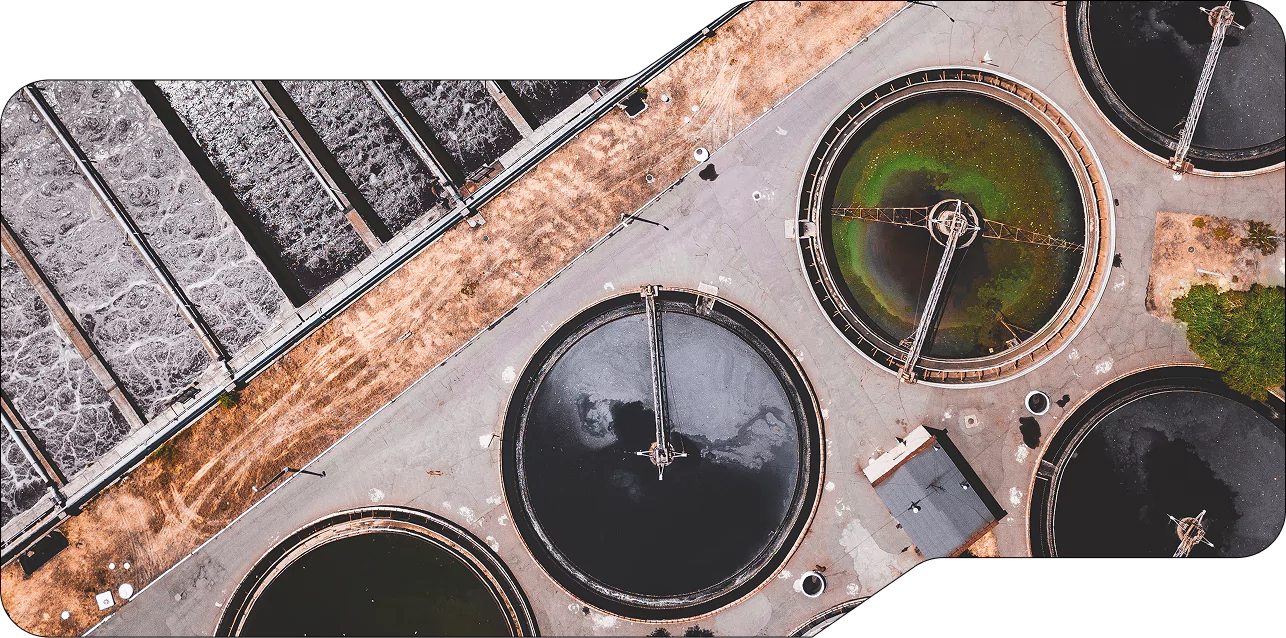
POLYUREA PROVIDES RESILIENT PROTECTION
IN EXTREME WASTEWATER CONDITIONS
POLYUREA PROVIDES RESILIENT
PROTECTION IN EXTREME
WASTEWATER CONDITIONS
Inside wastewater treatment facilities, infrastructure longevity is constantly under threat; wastewater immersion conditions expose surfaces to acids, caustics, microbes, and abrasive solids, all of which slowly but surely corrode surfaces until entire structures are at risk. For decades, epoxy and urethane coatings have been used to line tanks and pipes, but these older technologies have limitations. Epoxy is strong but can be brittle, unable to flex well with substrate movement or thermal expansion. Urethane (polyurethane) coatings are more flexible than epoxy but still can fall short in extremely demanding scenarios and lack the level of moisture and chemical resistance that wastewater coatings are expected to deliver.
Polyurea doesn’t possess the same shortcomings and was actually engineered as a more robust alternative to polyurethane. It’s a 100% solids spray-applied protective coating that creates an immersion grade elastomer that remains intact even under continuous submersion (immersion service) and temperature swings. Its chemical structure yields superior protection against a wide range of substances – from sewage and industrial effluents to harsh disinfectants. Moreover, polyurea is highly resistant to hydrogen sulfide and the sulfuric acid it generates, making it ideal for wastewater applications where bacterial byproducts can aggressively attack infrastructure. It’s suitable for coating the interior of clarifiers, digesters, and wet wells or the exterior surfaces of tanks and pipes; polyurea delivers a corrosion-resistant shield that significantly extends the service life of almost any wastewater asset.
Polyurea doesn’t possess the same shortcomings and was actually engineered as a more robust alternative to polyurethane. It’s a 100% solids spray-applied protective coating that creates an immersion grade elastomer that remains intact even under continuous submersion (immersion service) and temperature swings. Its chemical structure yields superior protection against a wide range of substances – from sewage and industrial effluents to harsh disinfectants. Moreover, polyurea is highly resistant to hydrogen sulfide and the sulfuric acid it generates, making it ideal for wastewater applications where bacterial byproducts can aggressively attack infrastructure. It’s suitable for coating the interior of clarifiers, digesters, and wet wells or the exterior surfaces of tanks and pipes; polyurea delivers a corrosion-resistant shield that significantly extends the service life of almost any wastewater asset.
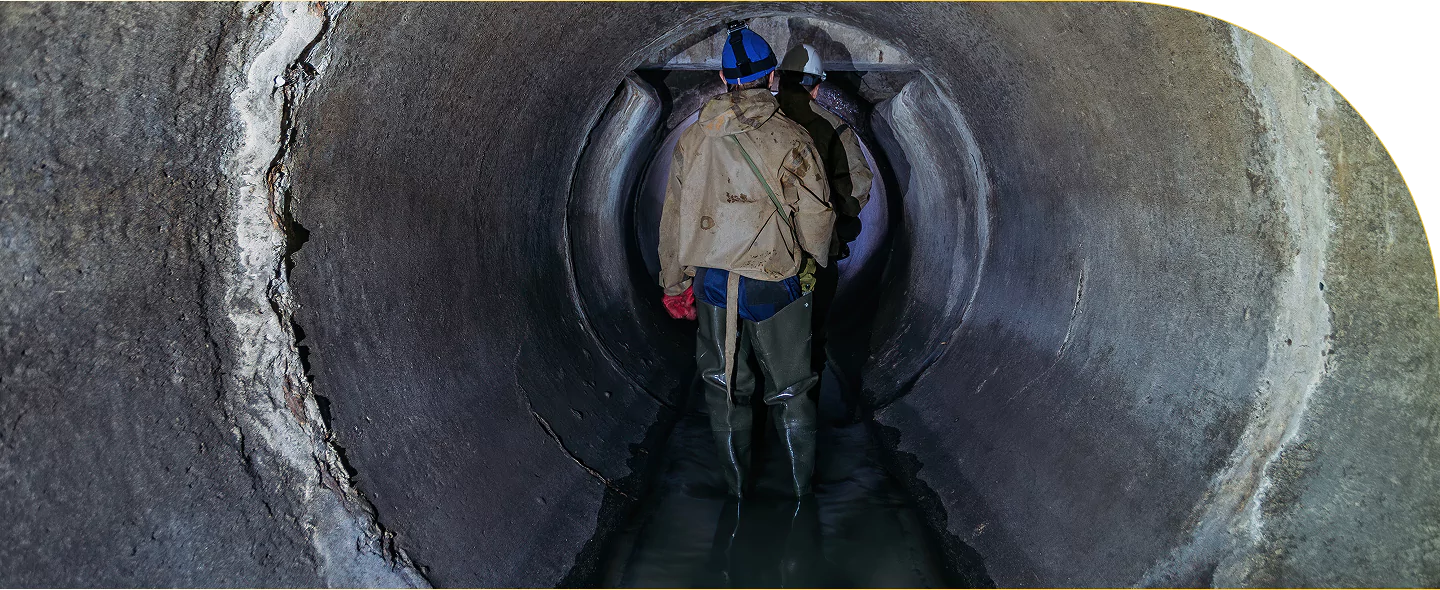
POLYUREA VS. EPOXY & POLYURETHANE
POLYUREA VS. EPOXY &
POLYURETHANE
Industry trends show a clear shift away from conventional epoxy and polyurethane coatings and toward polyurea. However, it’s not a zero-sum game; all three have their place in the coatings industries, but polyurea often outperforms its predecessors in many contexts, including in protecting wastewater infrastructure.
EPOXY COATINGS:
Epoxies bond well to metal surfaces and concrete, providing hard, abrasion-resistant protection. They’re widely used as industrial coatings and marine coatings because of their good chemical resistance, however, epoxy coatings cure slowly and are prone to cracking under movement or thermal stress. Additionally, in wastewater environments, hydrogen sulfide and other acids can degrade epoxy over time, and epoxies lack the elongation to bridge active cracks.
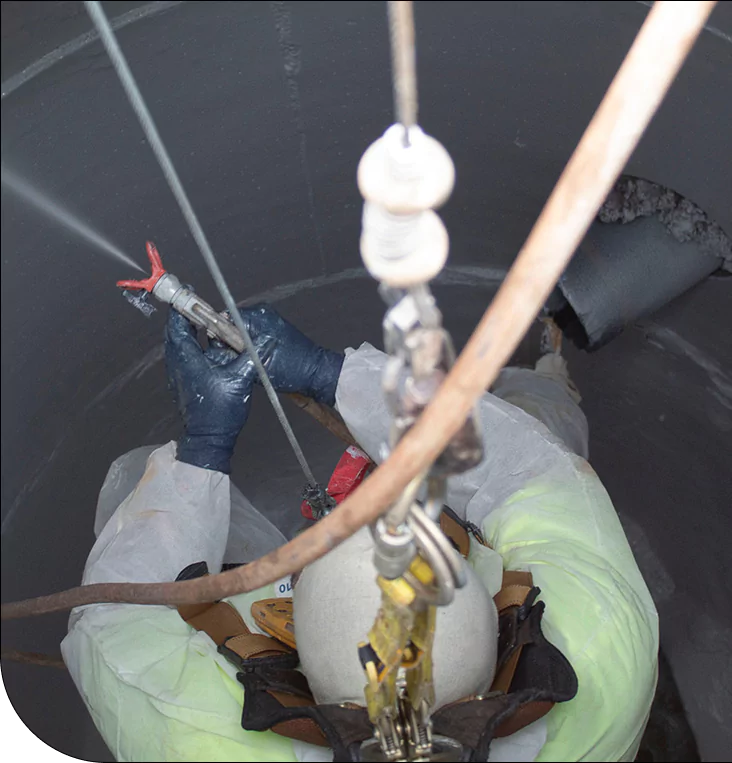
POLYURETHANE
(URETHANE) COATINGS:
Polyurethane is more flexible than epoxy and is often used in urethane pipe lining and tank linings. It offers decent chemical and wear resistance with quicker cure times than epoxy, which is why urethane coatings are common as exterior steel coatings and floor finishes (also due to their toughness). Yet, in the most demanding wastewater immersion conditions, standard polyurethane doesn’t match the crack-bridging of polyurea, and urethanes also typically cannot achieve the same high-film builds in a single application that polyurea can.
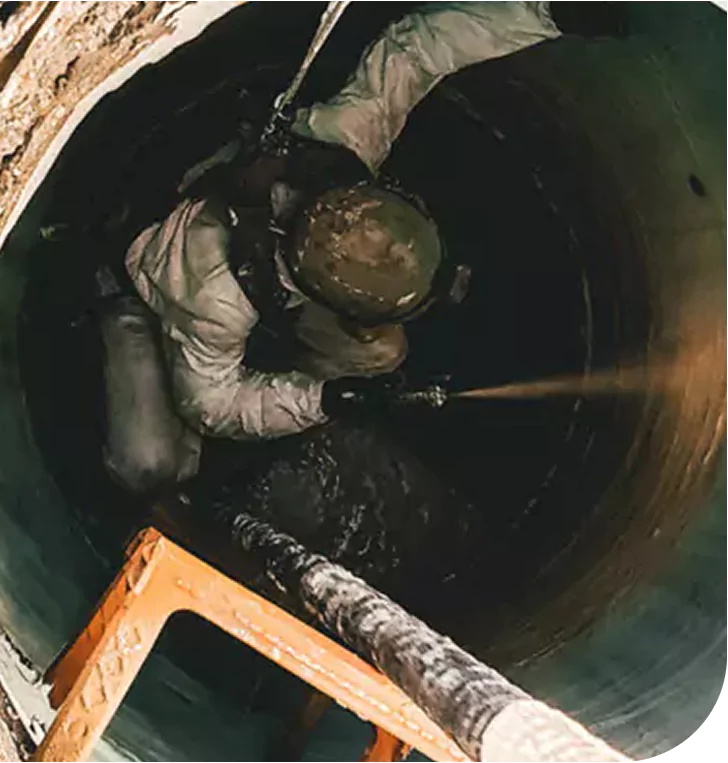
POLYUREA COATINGS:
Polyurea combines the strengths of its predecessors and pushes them further. It cures rapidly – starting to set and cure within seconds and reaching full cure in a day or less – allowing an easy application and quick return to service. Unlike epoxy, polyurea remains highly elastic (able to elongate 300-400% without cracking) to accommodate structural movements. Compared to polyurethane coatings, polyurea achieves greater thickness in one pass (it’s common to spray a high-build polyurea at 50-80+ mils in a single coat), creating a robust monolithic lining system with no seams or weak points. The result can only be described as superior protection: a polyurea liner can absorb impacts, resist abrasion, and shrug off chemical exposure that might cause other coatings to blister or peel. In head-to-head comparisons, polyurea’s combination of fast cure, flexibility, and durability often makes it the best value over the life cycle of wastewater assets, even if its upfront cost is higher.
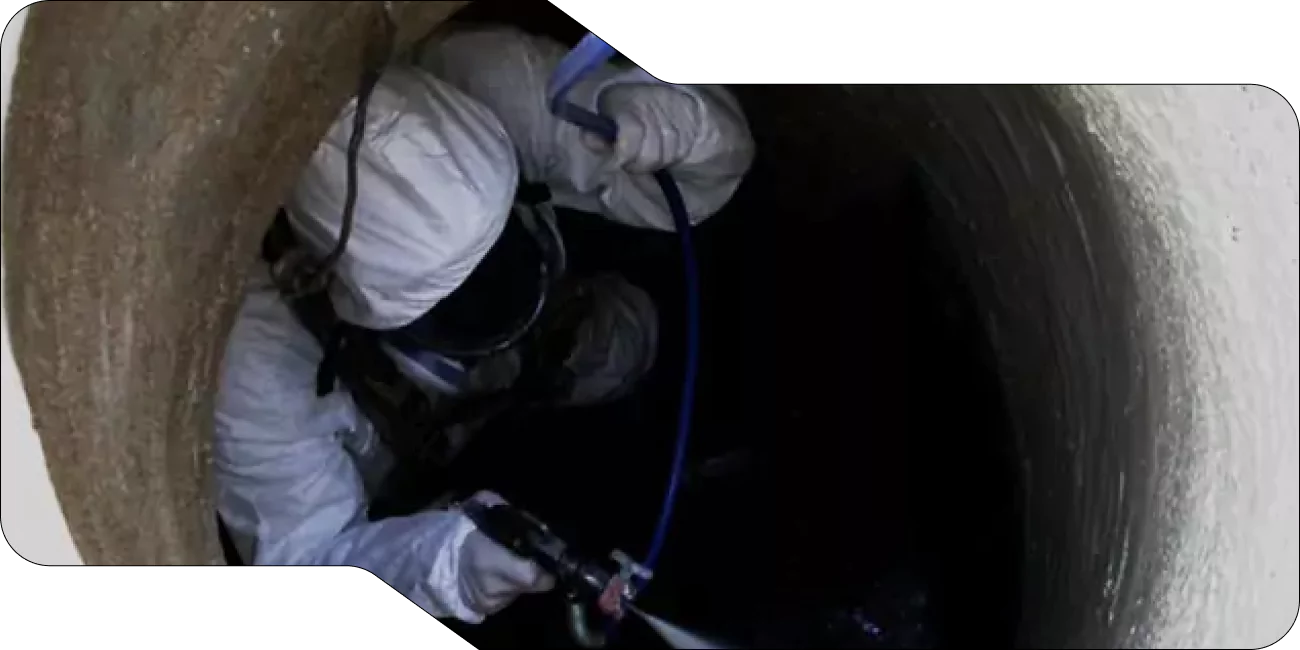
LONG-TERM PERFORMANCE AND LIFE CYCLE SAVINGS
LONG-TERM PERFORMANCE
AND LIFE CYCLE SAVINGS
Choosing the right coating is not just about initial protection – it’s about maintenance costs and longevity. A properly installed polyurea system can last decades in wastewater service with minimal maintenance, dramatically lowering the total cost of ownership and operation. Its corrosion resistance and chemical inertness mean that concrete surfaces won’t need frequent patching, and steel components won’t require constant repainting. By preventing micro-cracks and corrosion from forming, polyurea coating systems help preserve structural integrity for future years; they extend the life cycle of critical components, delaying expensive overhauls or replacements.
Maintenance crews also appreciate polyurea’s benefits, as surfaces coated with polyurea are non-porous and easy to clean – often, a simple hose-down suffices where conventional coatings would require aggressive scrubbing or re-coating. For example, clarifier walls or equipment housings protected by polyurea accumulate less residue and can be cleaned faster, which reduces facility downtime. Polyurea’s easy application and quick curing can also minimize out-of-service periods during initial installation or repairs; a tank lined with polyurea can often be returned to operation within hours of coating, unlike epoxy, which might keep a tank offline for a week or more of curing. Less downtime translates to savings and operational continuity, a major benefit for facility managers and procurement decision-makers concerned with maintenance costs and process interruptions.
Furthermore, polyurea’s durability means that secondary containment areas—like chemical storage pads or spill berms—maintain their integrity if an incident occurs. Should a tank or pressure vessel leak within a containment area, a polyurea liner will hold up against the spilled chemicals and prevent environmental release, and it’s this reliability under stress that gives engineers and EHS personnel peace of mind; it’s a protective measure that safeguards not just the equipment, but also the surrounding environment and community.
Maintenance crews also appreciate polyurea’s benefits, as surfaces coated with polyurea are non-porous and easy to clean – often, a simple hose-down suffices where conventional coatings would require aggressive scrubbing or re-coating. For example, clarifier walls or equipment housings protected by polyurea accumulate less residue and can be cleaned faster, which reduces facility downtime. Polyurea’s easy application and quick curing can also minimize out-of-service periods during initial installation or repairs; a tank lined with polyurea can often be returned to operation within hours of coating, unlike epoxy, which might keep a tank offline for a week or more of curing. Less downtime translates to savings and operational continuity, a major benefit for facility managers and procurement decision-makers concerned with maintenance costs and process interruptions.
Furthermore, polyurea’s durability means that secondary containment areas—like chemical storage pads or spill berms—maintain their integrity if an incident occurs. Should a tank or pressure vessel leak within a containment area, a polyurea liner will hold up against the spilled chemicals and prevent environmental release, and it’s this reliability under stress that gives engineers and EHS personnel peace of mind; it’s a protective measure that safeguards not just the equipment, but also the surrounding environment and community.
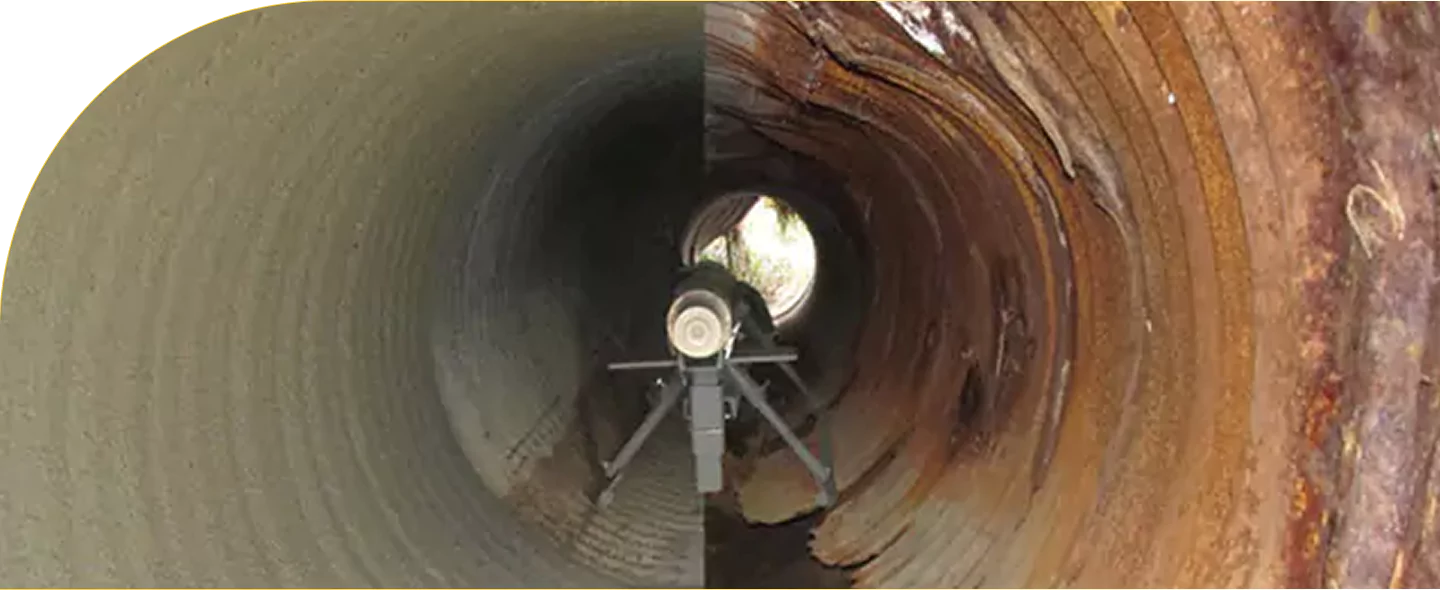
VERSATILE APPLICATIONS ACROSS
THE WASTEWATER INDUSTRY
One of the reasons polyurea has gained wide adoption is its versatility across a wide range of applications. In the wastewater industry, a single product can often be used to protect diverse structures and surfaces, simplifying coating systems for facility upgrades.
CONCRETE TANKS AND BASINS
Polyurea can form a tough inner liner on settlement tanks, aeration basins, or clarifiers, resisting water penetration and chemical erosion. Such lining systems stop concrete deterioration and leakage, ensuring tanks remain structurally sound even under continuous immersion.
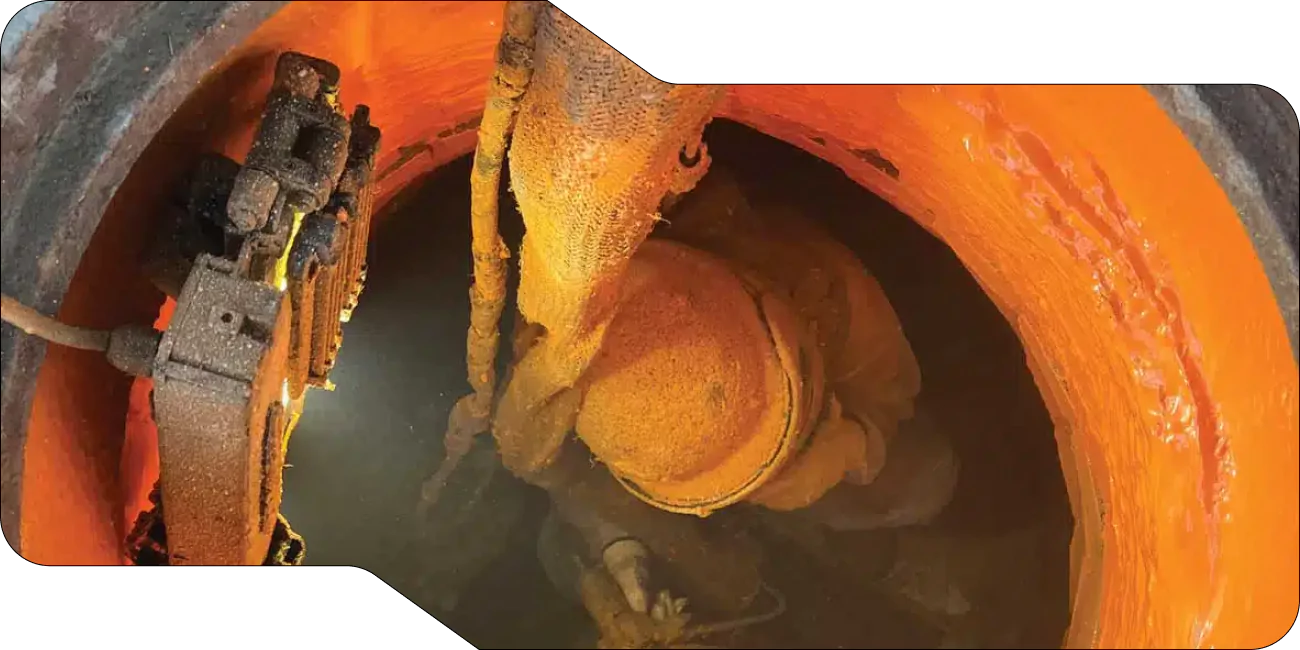
STEEL PIPES AND STRUCTURAL STEEL
Polyurea bonds to steel, creating a flexible jacket over metal surfaces that prevents rust. It’s commonly used for exterior pipe coatings as well as internal pipe linings, effectively acting as a urethane pipe lining alternative with higher performance. Even complex geometries like weirs, grates, and support beams can be uniformly coated thanks to spray application, protecting every inch from corrosion.
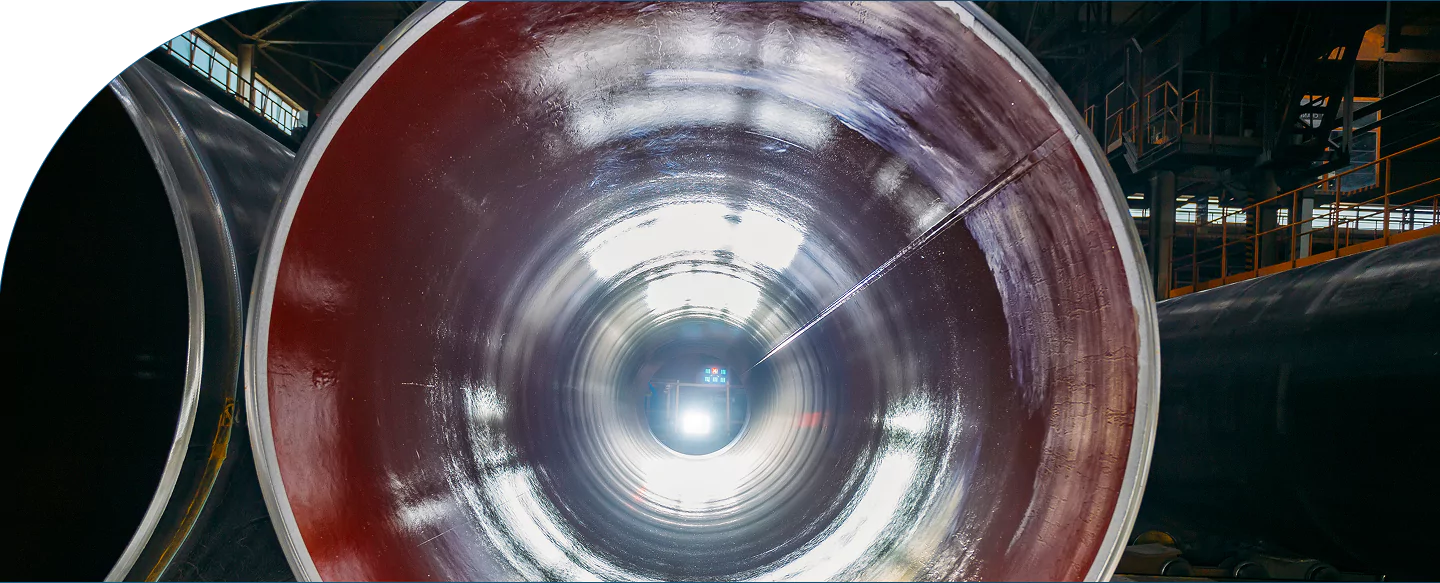
MANHOLES, WET WELLS, AND SUMPS
These confined spaces see constant exposure to sewage and sewer gas, so polyurea is often used to rehabilitate manhole interiors and wet wells, because it can be spray-applied onto damp surfaces and will cure even in humid, cool conditions that would foil other coatings. The resulting liner seals all joints against infiltration or exfiltration, a key factor in environmental compliance.
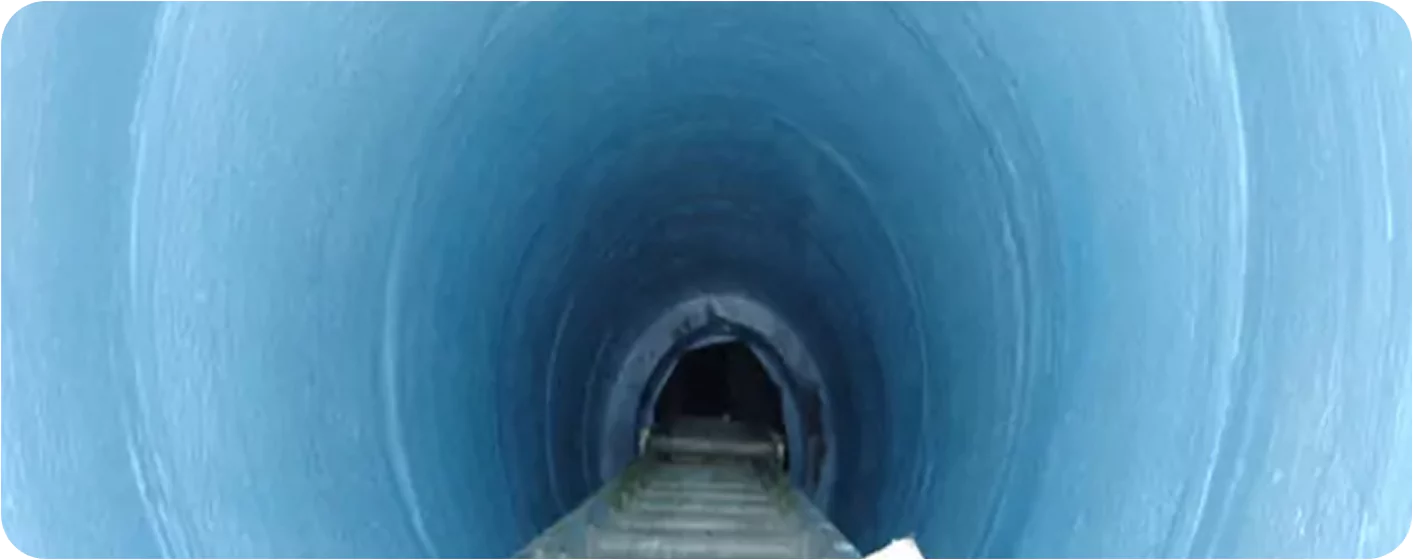
SECONDARY CONTAINMENT AND
CHEMICAL STORAGE AREAS
Polyurea’s chemical resistance makes it ideal for coating containment dikes, troughs, and pads in wastewater treatment plants and industrial facilities. It can handle spills of chlorine, acids, caustics, and fuels, serving as an impermeable safety net for secondary containment. Moreover, this usage is not limited to water treatment – many industries (from oil & gas to agriculture) use polyurea for spill containment, highlighting its crossover strength in the coatings industries.
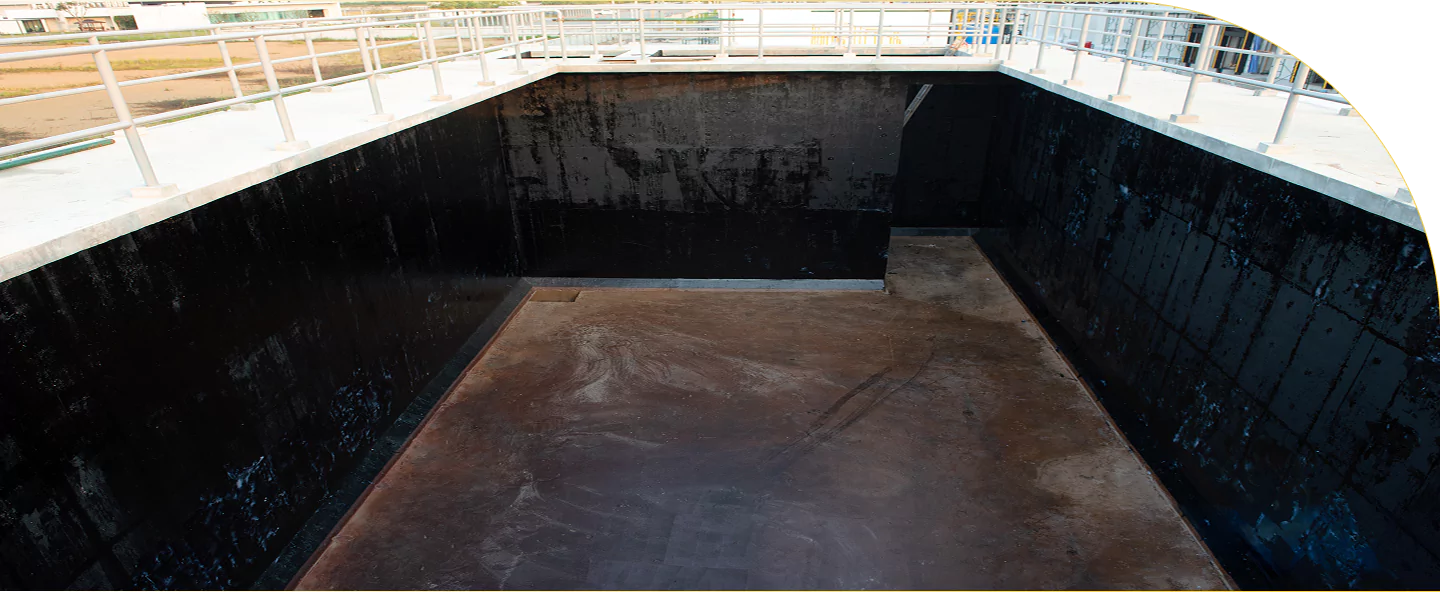
latest news & bLOGS
POTABLE WATER AND DUAL-USE TANKS
Some facilities have dual-use tanks or adjacent potable water storage tanks that demand strict safety standards. Advanced polyurea products now meet potable water certifications (NSF 600/ANSI 61 standards for low leachables), which enable use in potable water tanks and treatment processes without affecting water quality. Plant operators can thus use one coating system (polyurea) across both wastewater and drinking water areas, simplifying maintenance and ensuring compliance with health regulations.
From exterior surfaces of tanks to interior pipe linings, polyurea delivers consistent and reliable performance; its ability to adhere to concrete, steel, fiberglass, and other substrates with a tenacious bond means one solution can cover the gamut of wastewater applications. Polyurea thereby simplifies procurement (specifiers can standardize on a single solution) and often leads to better bulk pricing and support from the manufacturer. For engineers and specifiers, using polyurea across multiple assets can streamline projects and ensure that all coated areas receive the same superior protection standard.
From exterior surfaces of tanks to interior pipe linings, polyurea delivers consistent and reliable performance; its ability to adhere to concrete, steel, fiberglass, and other substrates with a tenacious bond means one solution can cover the gamut of wastewater applications. Polyurea thereby simplifies procurement (specifiers can standardize on a single solution) and often leads to better bulk pricing and support from the manufacturer. For engineers and specifiers, using polyurea across multiple assets can streamline projects and ensure that all coated areas receive the same superior protection standard.
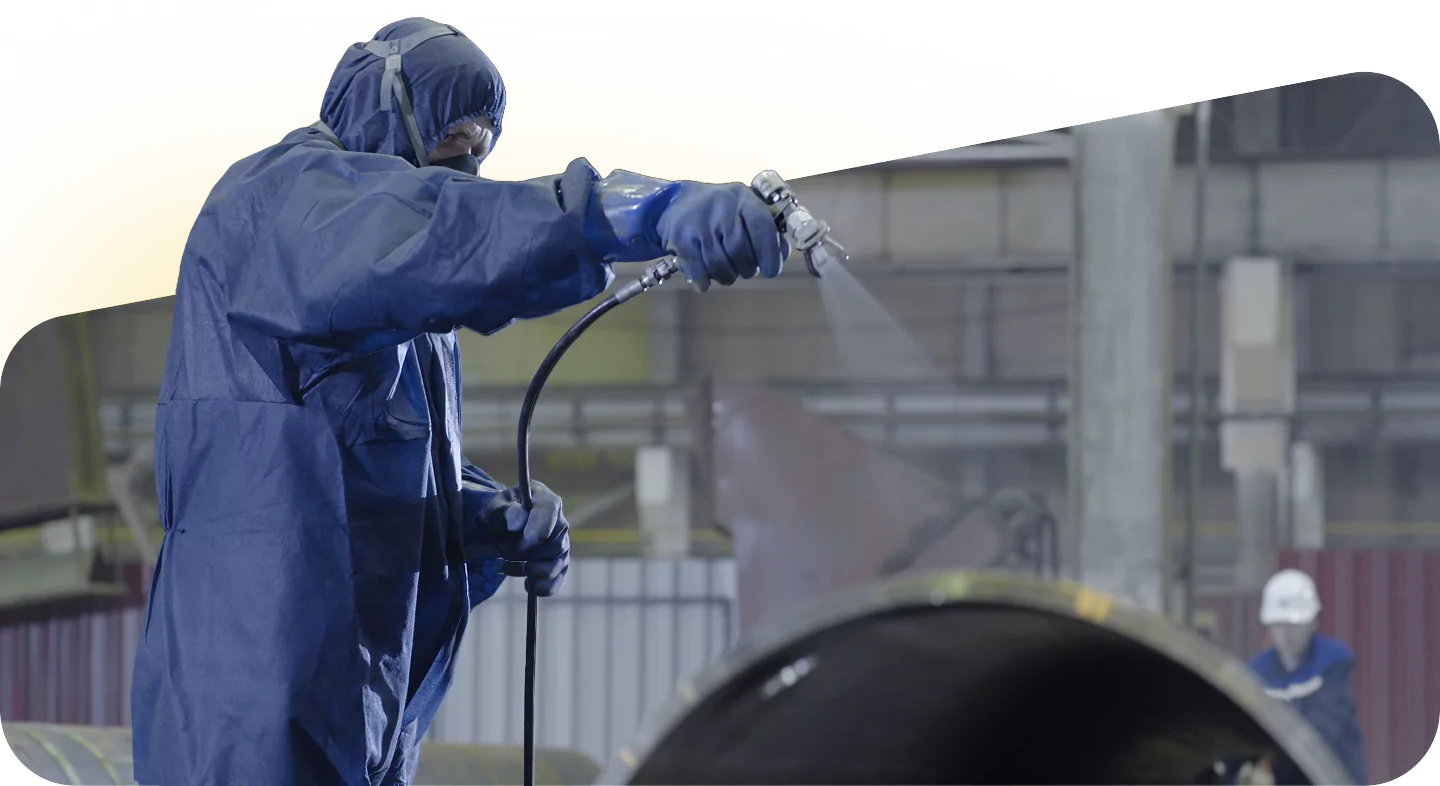
FREQUENTLY ASKED QUESTIONS
Polyurea coatings excel in wastewater treatment plants because they offer exceptional chemical, abrasion, and corrosion resistance in continuous immersion. They create a seamless, flexible liner that won’t crack if concrete moves, and they cure very fast, minimizing downtime; its durability and quick return to service reduce maintenance needs, making polyurea a cost-effective long-term solution for harsh wastewater environments.
In wastewater applications, polyurea typically outperforms epoxy and polyurethane. Epoxy coatings provide good chemical resistance but can be brittle and slow to cure, and polyurethane (urethane) coatings add flexibility but still have limits in extreme conditions. Polyurea combines high flexibility, rapid curing, and thick application in one coat. It resists hydrogen sulfide, bridges cracks, and lasts longer, often delivering lower life-cycle maintenance costs despite a higher initial cost.
Why Are Polyurea Coatings Recommended For Wastewater Treatment Plants?A properly applied polyurea system can last for decades in a wastewater environment with minimal maintenance. Its robust bond and chemical inertness prevent common issues like blistering, delamination, or corrosion of the underlying structure. Routine inspections are still recommended, but unlike some epoxy linings that may need recoating in 5-10 years, polyurea linings often protect well beyond 20 years before any major touch-ups are required.
Spray foam improves energy efficiency in two major ways: by providing high R-value insulation and by creating an effective air seal. Its thermal resistance reduces heat loss in winter and heat gain in summer, so your HVAC system runs less to maintain comfort. At the same time, spray foam’s expansion seals cracks and gaps, reducing air infiltration which can account for a large portion of energy waste.CONTACT US
REQUEST A QUOTE OR
BECOME AN APPLICATOR
ArmorThane has built a strong reputation over the past 30 years for producing high-quality, durable protective coatings.

Phone Number
Tel: 417.831.5090

Email Us
moreinfo@armorthane.com
